The next destination after the “desert castle” Qasr Al-Mushatta was archaeological site Al Qastal. But, I was also hungry and so I agreed with the driver that we would together go for lunch in the shape of a chicken shawarma. I let him chose the place and so we went to a fast food place in the small contemporary town of Qastal in which there is the archaeological site I wanted to see.
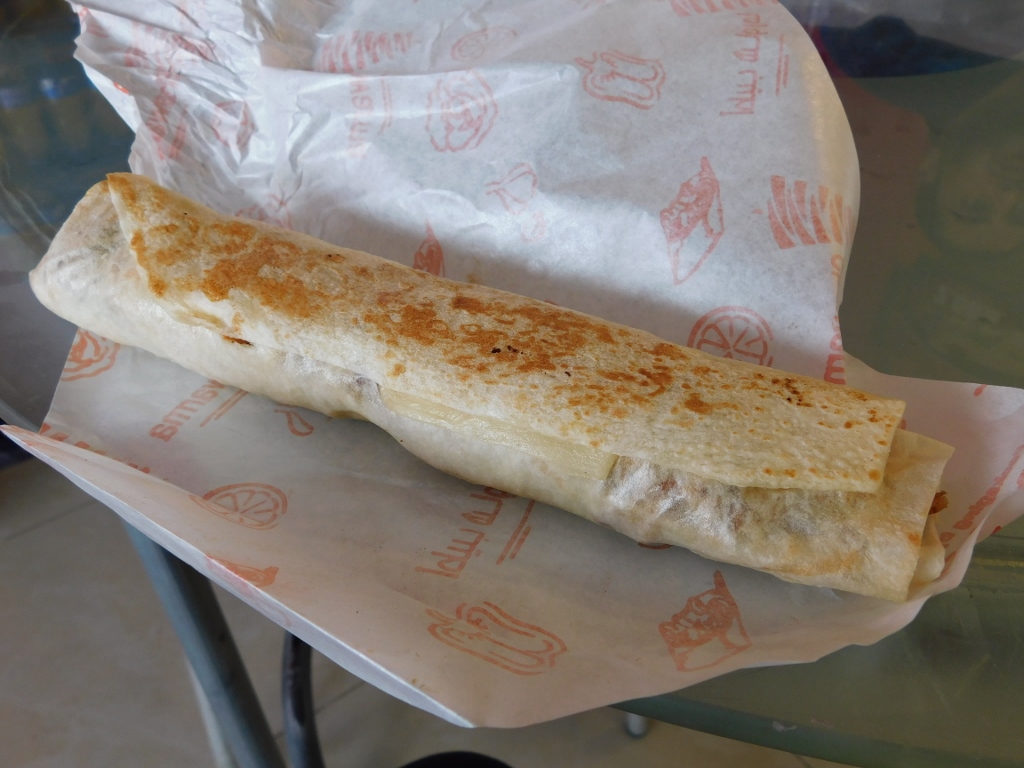 Shawarma
Shawarma
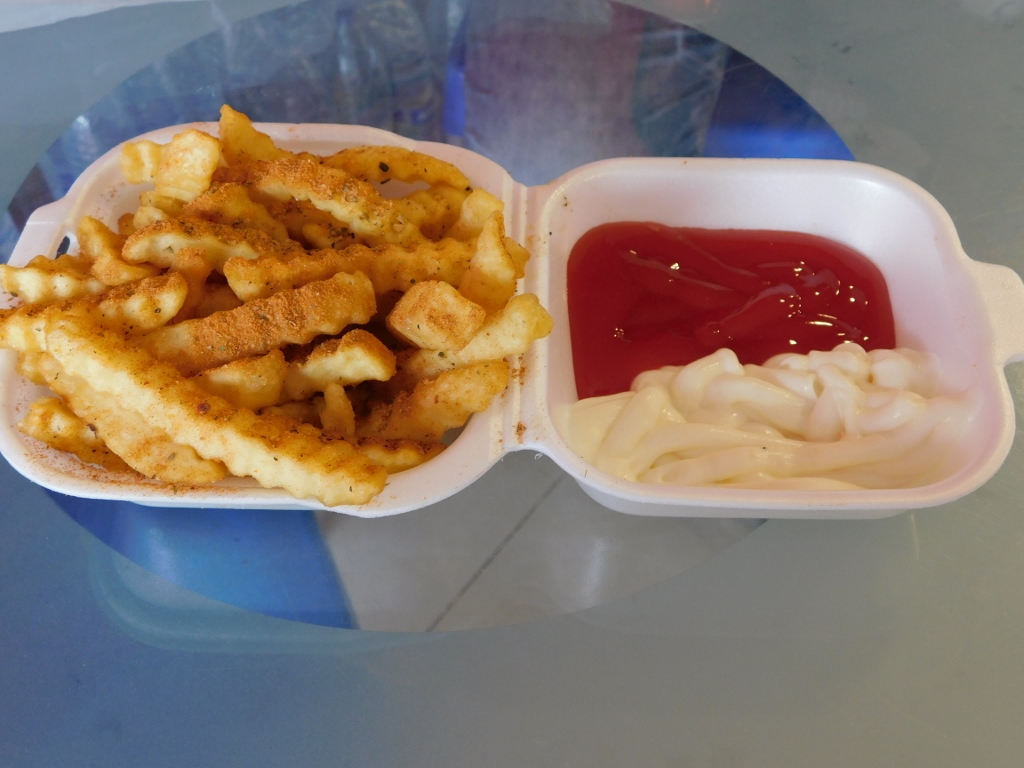 Additions
Additions
We sat together at a table in the restaurant and enjoyed what we ordered. By the end of this journey, shawarma was my favourite dish, especially in the evening. In addition to being tasty, I could order it quickly and then, most often, I would take it back to my hotel room, although it would not be a problem even if I ate it in the middle of the street. Still, it was more comfortable in the room.
After this we drove to Al Qastal archaeological site that is only a couple of hundred of metres away from the motorway leading to Amman’s international airport.
The site includes remains of one of the oldest and most complete Umayyad settlements in the Near East. There are almost all of the structures that made a typical Umayyad settlement: the main palace, mosque, cemetery, public baths, residential buildings, etc. When I read about this cultural property, it seemed like a huge site and I wondered if I would have the time to visit it all, although my guidebooks gave very modest information about Al Qastal.
As it turned out, this is indeed a large site taking into account an Umayyad dam that served for collecting water used for the irrigation, which is around 1 km farther away, or numerous water cisterns scattered around the settlement. However, this site has still not been developed for the visits of clueless amateurs. To start with, there was no place to buy tickets, there was no fence and there were no information boards either. So, I knew practically nothing about the place, but I was here, so I started with the sightseeing of the central section of the site. It also started to drizzle lightly, so I realised I did not have a lot of time at my disposal.
First I started to walk around the perimeter of the site.
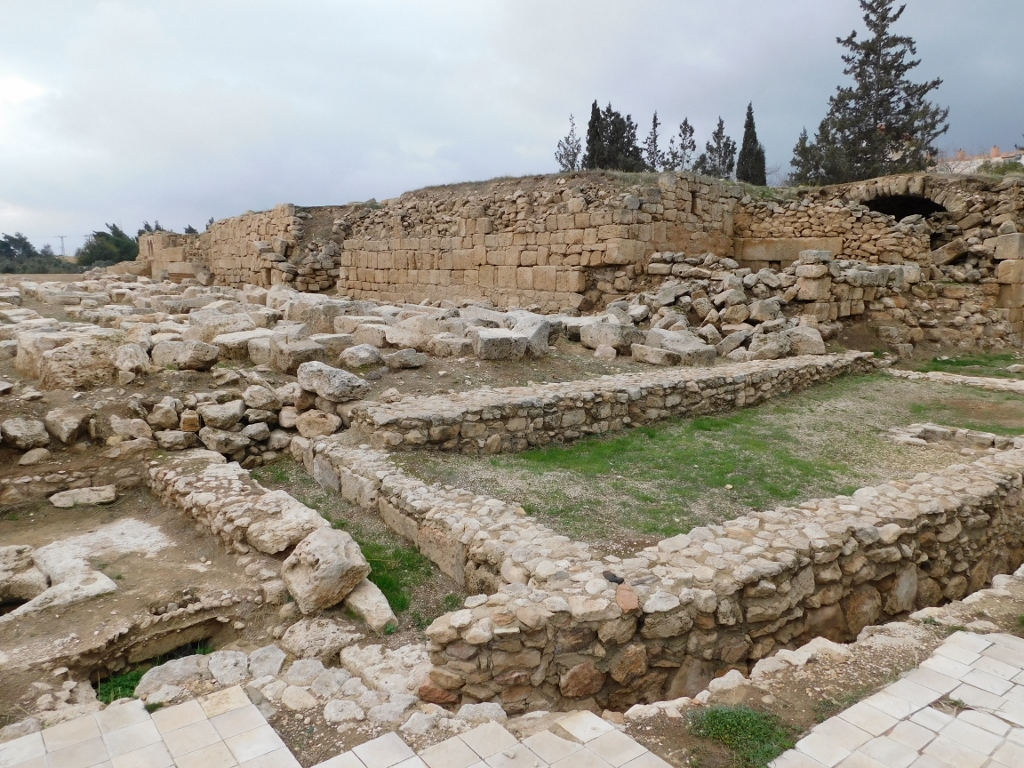 Al Qastal
Al Qastal
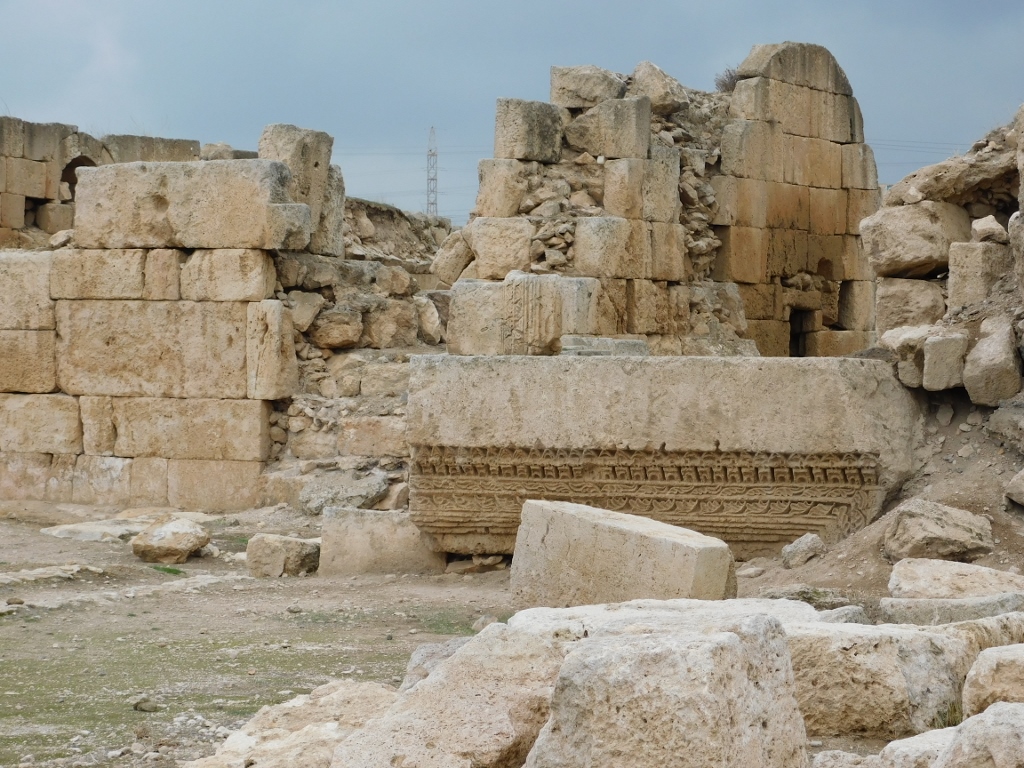 Al Qastal
Al Qastal
Although I’m not an archaeologist or a historian of art, I must admit that I enjoyed intensively, because it was completely clear that this used to be an impressive settlement and again there was nobody else but me at this site that is listed on the UNESCO’s Tentative World Heritage List.
Then I started to walk around the central sections of Al Qastal.
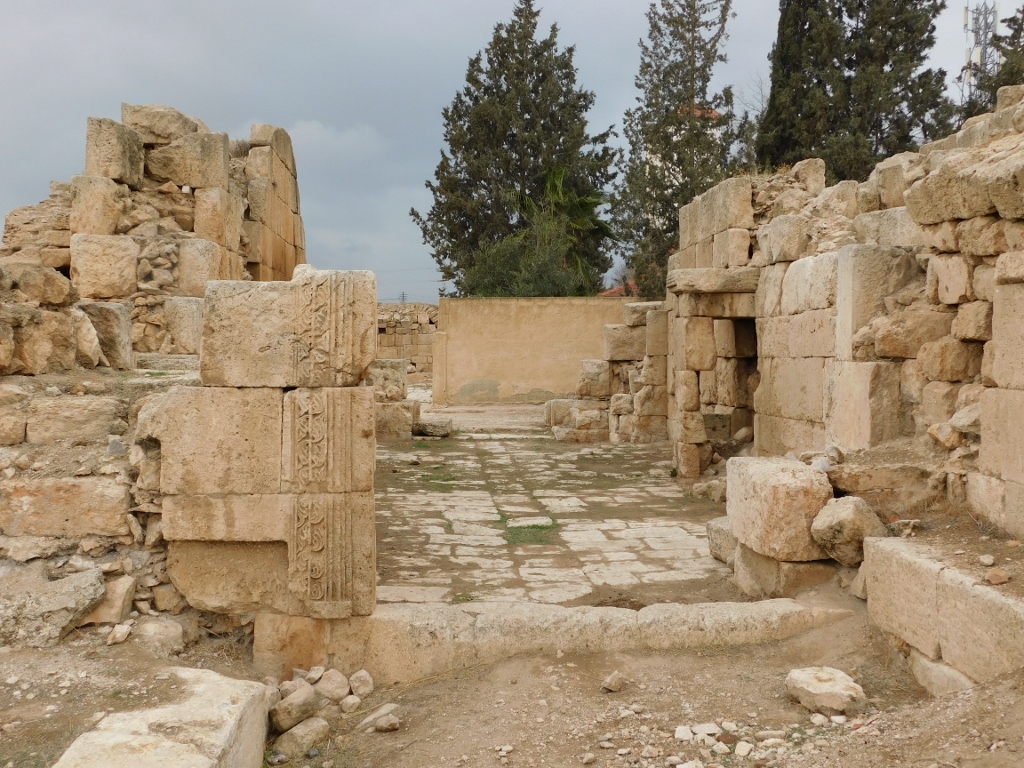 Al Qastal
Al Qastal
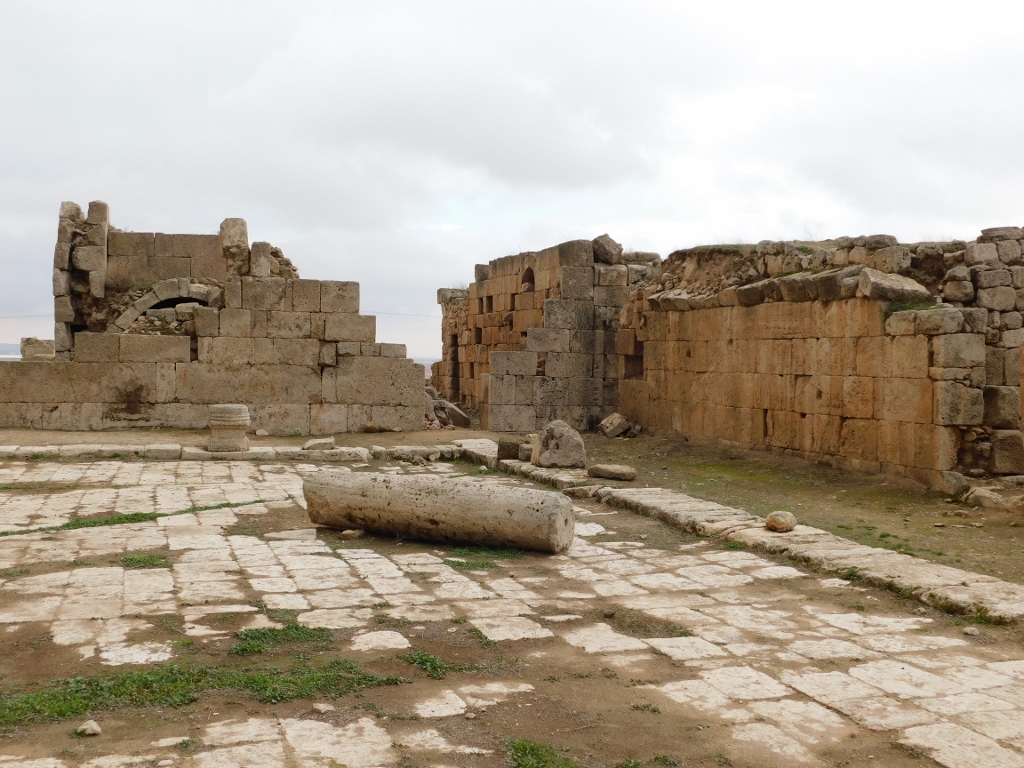 Al Qastal
Al Qastal
Although I don’t know what my photos show, in terms of exactly which structures can be seen in them, this does not take anything away from their beauty and attractiveness. And so, when I came across a staircase in one of the buildings, I had to climb up.
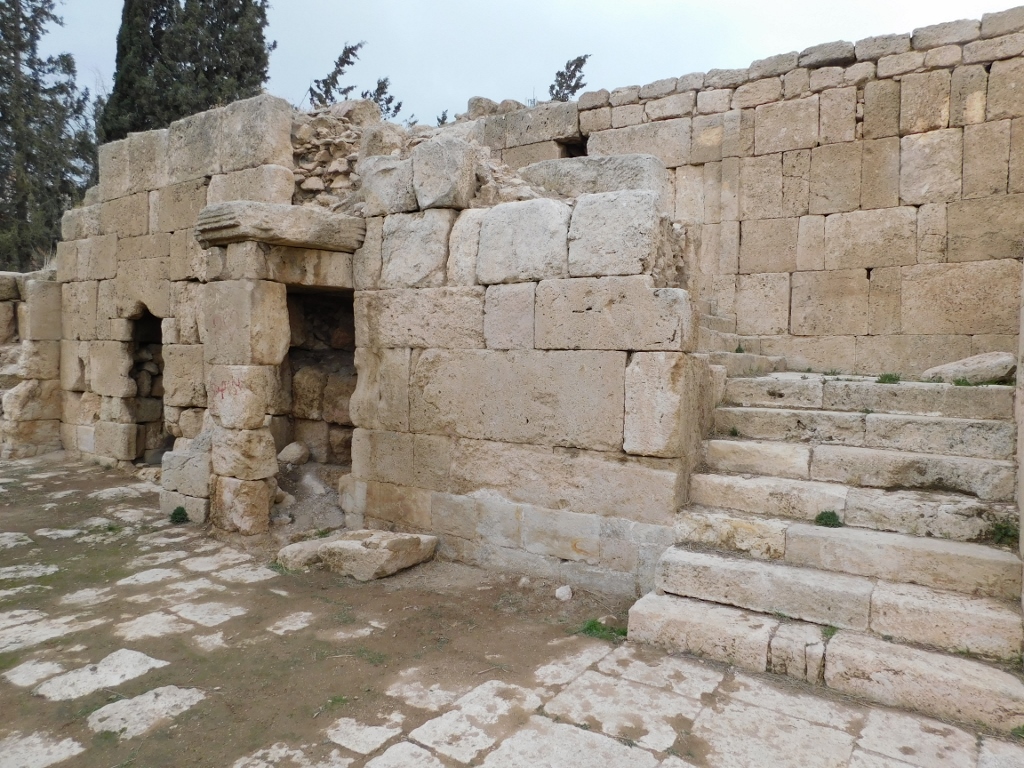 Al Qastal, a building with a staircase
Al Qastal, a building with a staircase
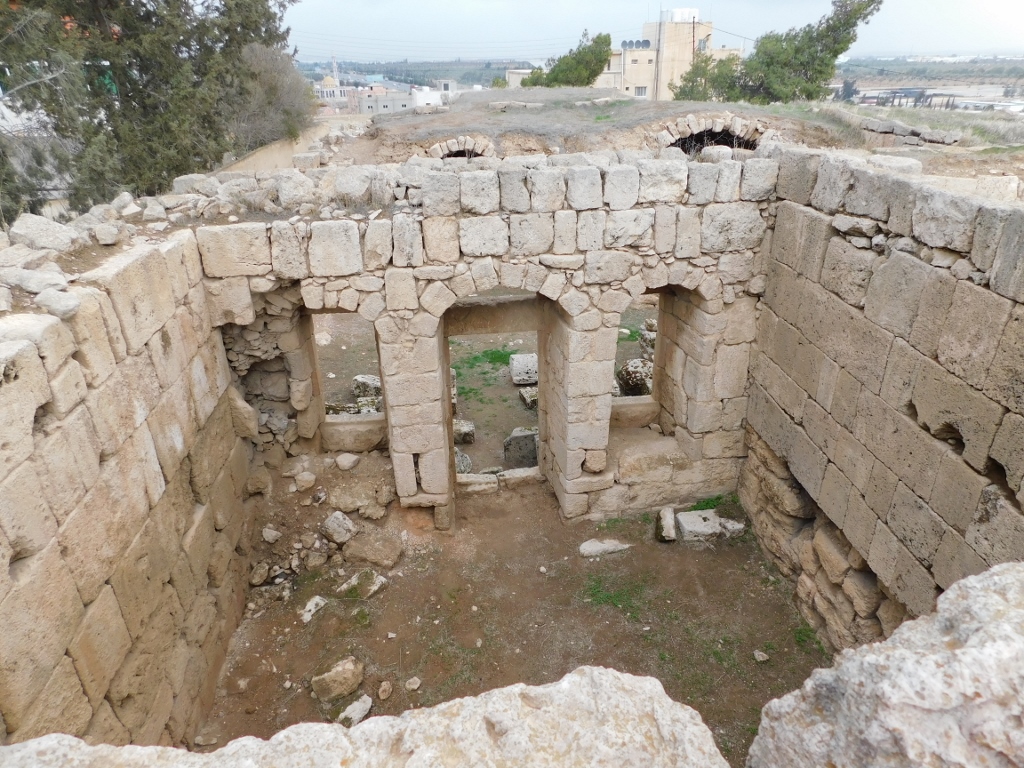 Al Qastal, view from the upper floor
Al Qastal, view from the upper floor
In a paved clearing, like a small square, I also saw a very interesting, clearly marked passage with steps, but this time the steps led – down. Well, I did not want to follow the steps this time around.
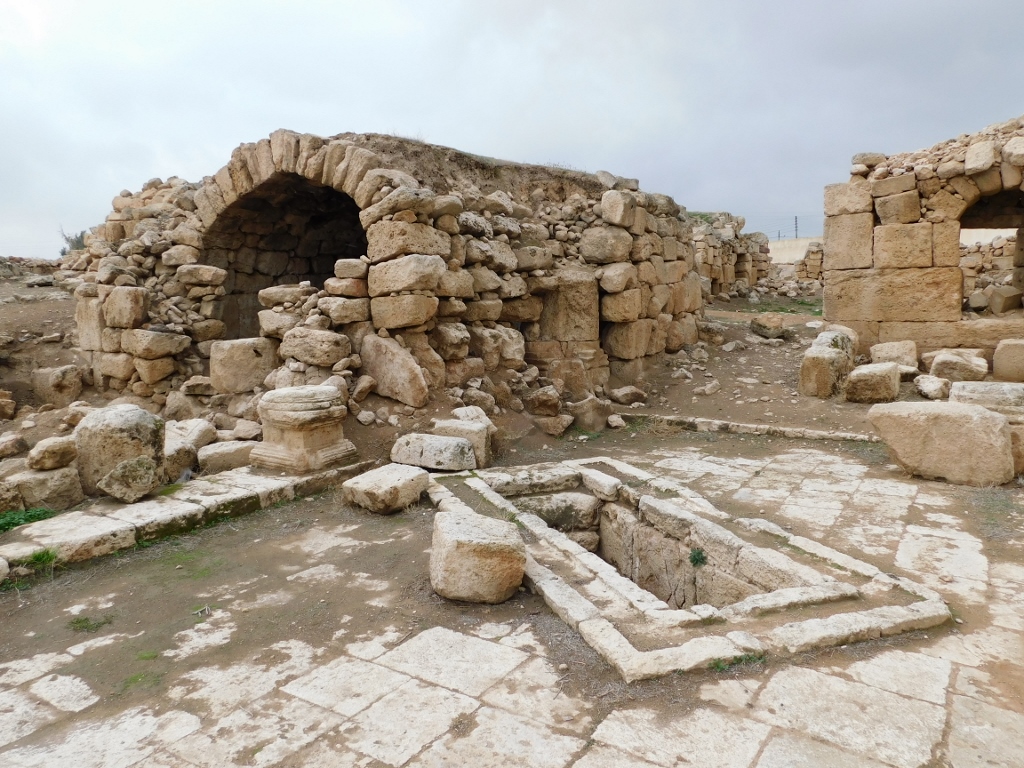 Al Qastal, note the rectangular “hole”, down right
Al Qastal, note the rectangular “hole”, down right
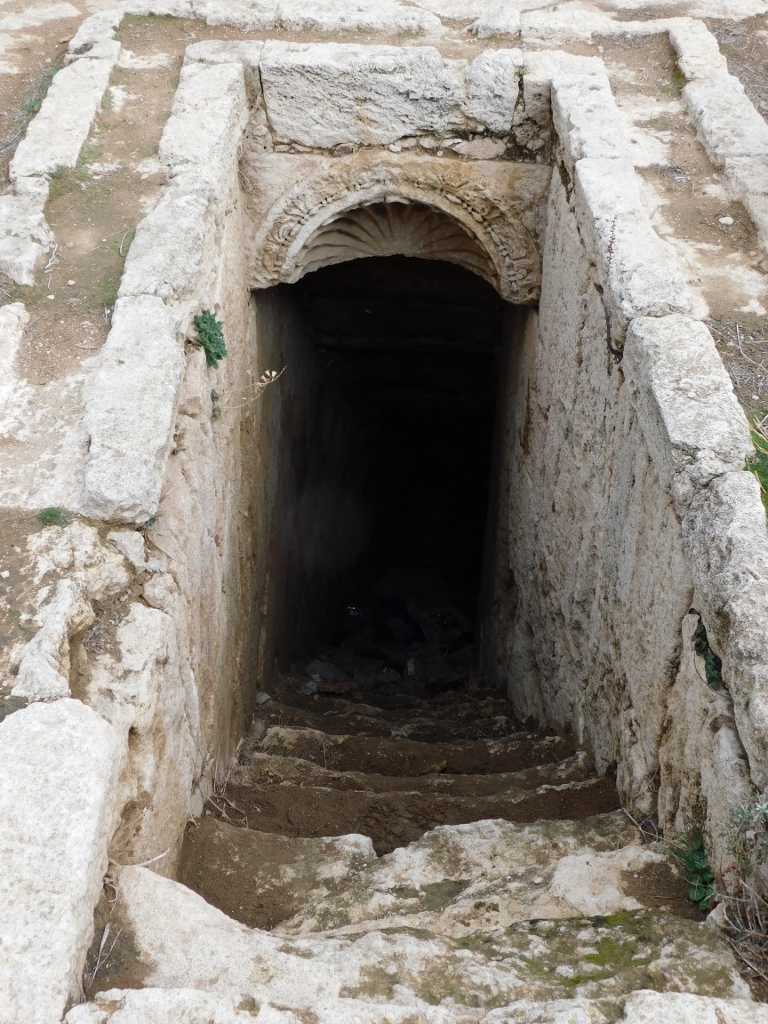 This is what the “hole” looks like when seen from up front
This is what the “hole” looks like when seen from up front
Then I ventured into passages between houses and I found it again very interesting and even fun.
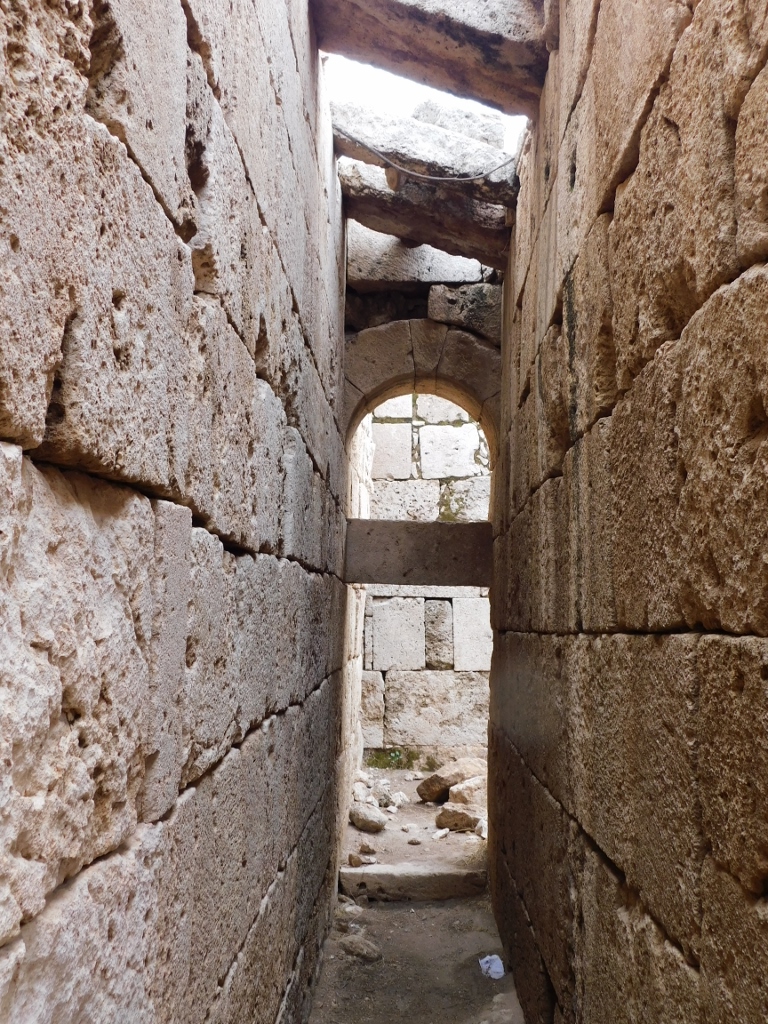 Al Qastal, a passage between houses
Al Qastal, a passage between houses
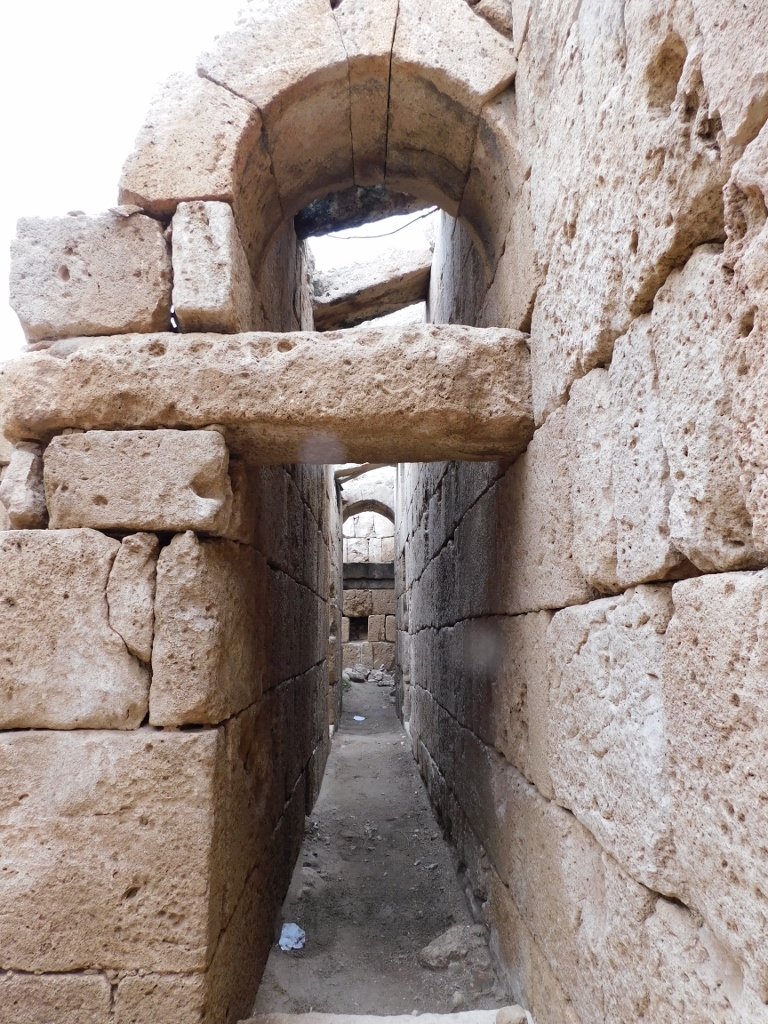 Al Qastal, a passage between houses
Al Qastal, a passage between houses
Then I reached a structure that I could now see from the inside, bearing in mind the mullioned window that I had noticed before from the outside and later went again to see and take photo of from the exterior.
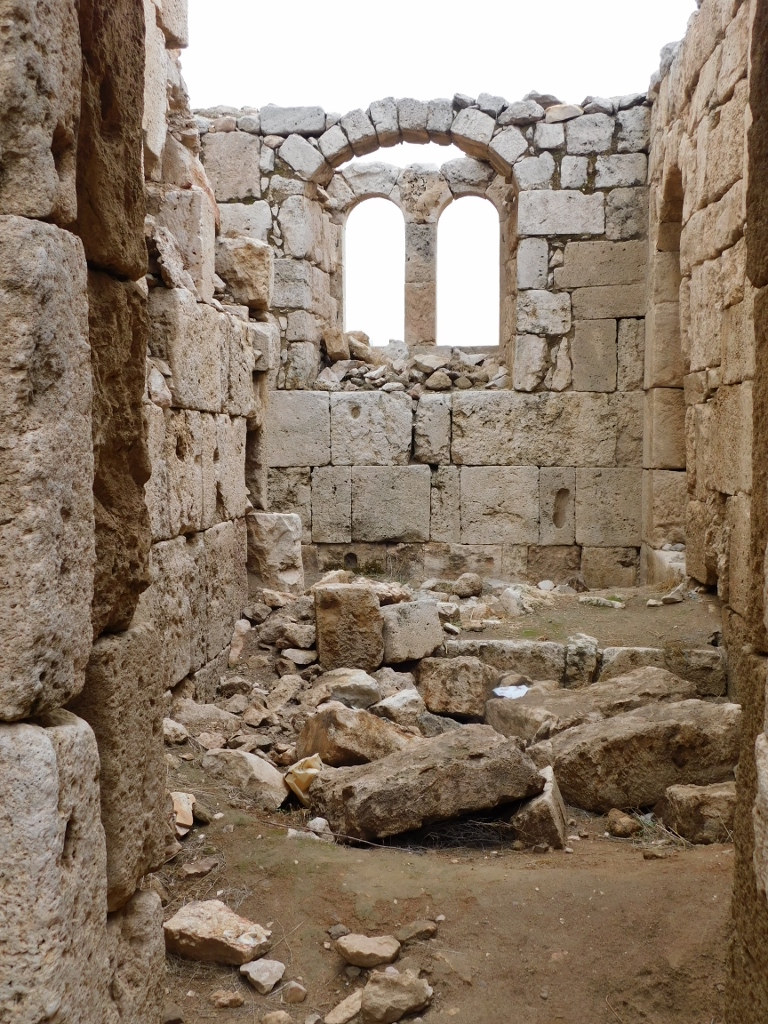 Al Qastal, a detail with the mullioned window seen from the “inside”
Al Qastal, a detail with the mullioned window seen from the “inside”
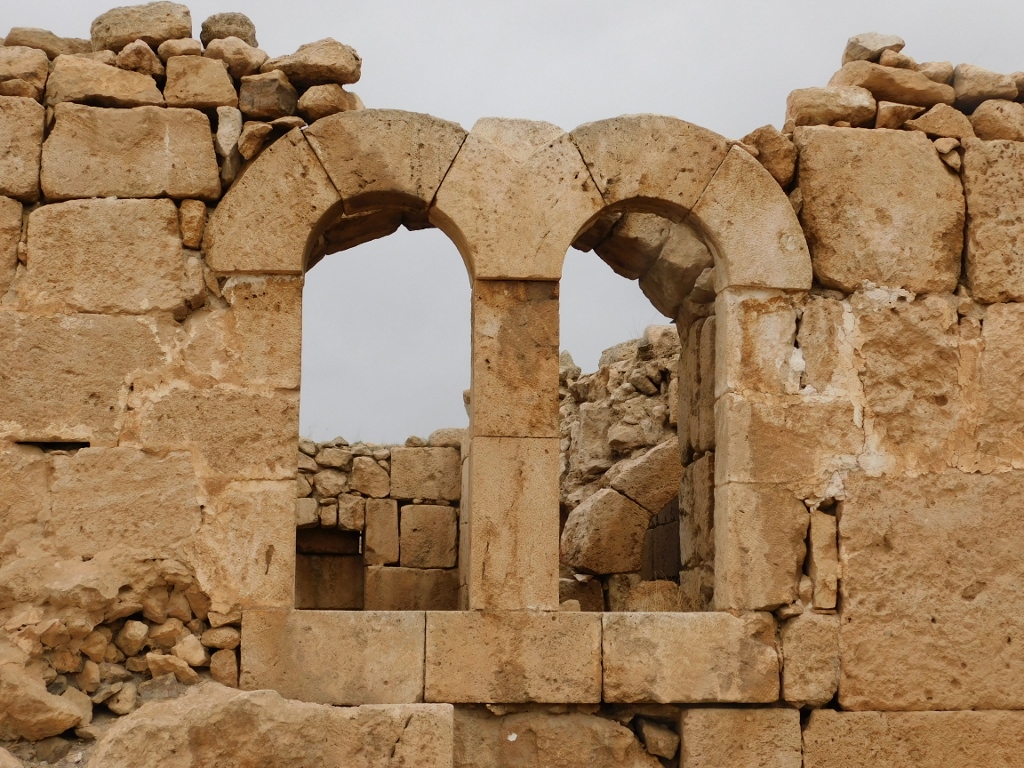 Al Qastal, the mullioned window from the outside
Al Qastal, the mullioned window from the outside
Since I was already on the outside of the central section of Al Qastal, I also went to the adjacent area with stone blocks arranged on the ground. I presume that they were put there by archaeologists in order to be able to find them more easily later on when they need to be fitted in their proper positions.
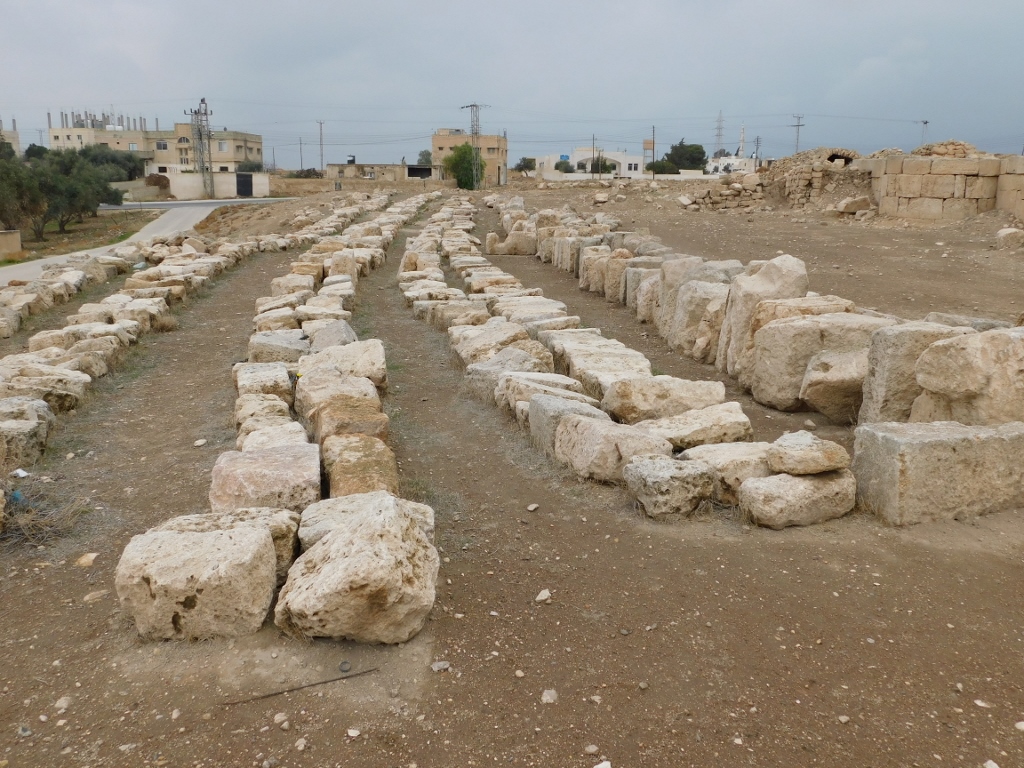 Al Qastal, a detail
Al Qastal, a detail
Then I went again between the central remains of the settlement, since it was starting to rain and I was heading in the direction of the car. Still, I came across a couple of interesting houses in front of which there was a clearing with numerous pieces of stone decoration. To start with, I realised that here was the house the upper floor of which I had already visited from the back side. This was the front. Also, you can spot rain drops on the photo, although I tried to wipe the lens of my camera regularly. The rain was faster.
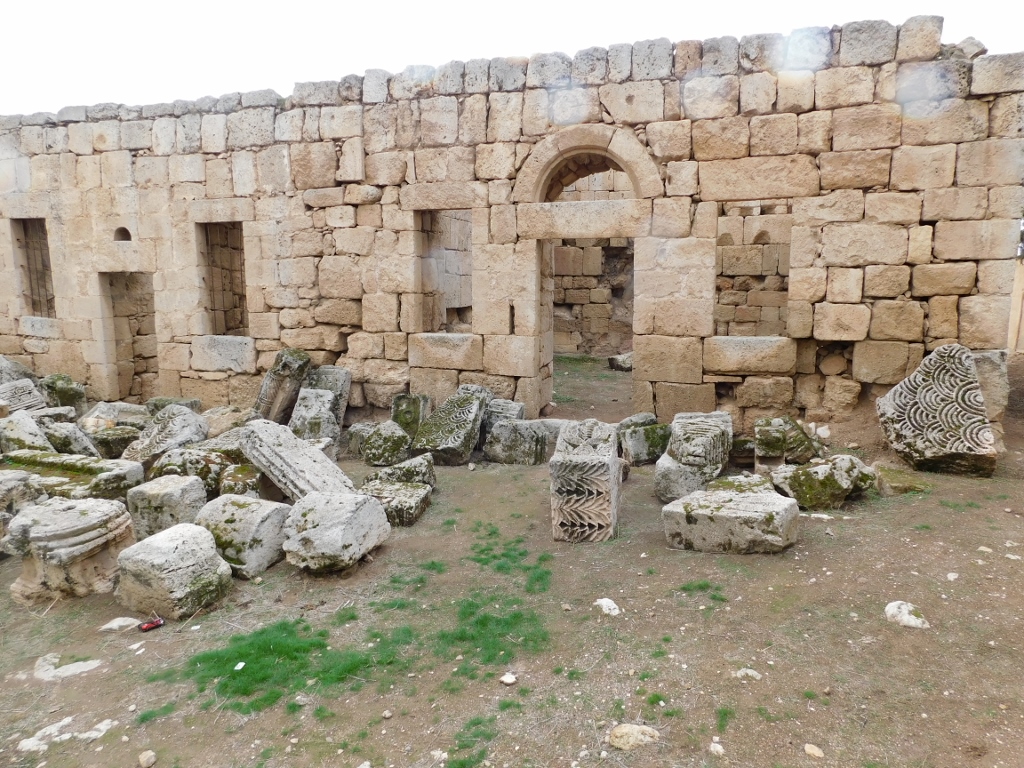 Al Qastal, a detail
Al Qastal, a detail
First I noticed a beautiful piece of stone decoration. The brownish-green material seen in the stone grooves is the earth and the moss.
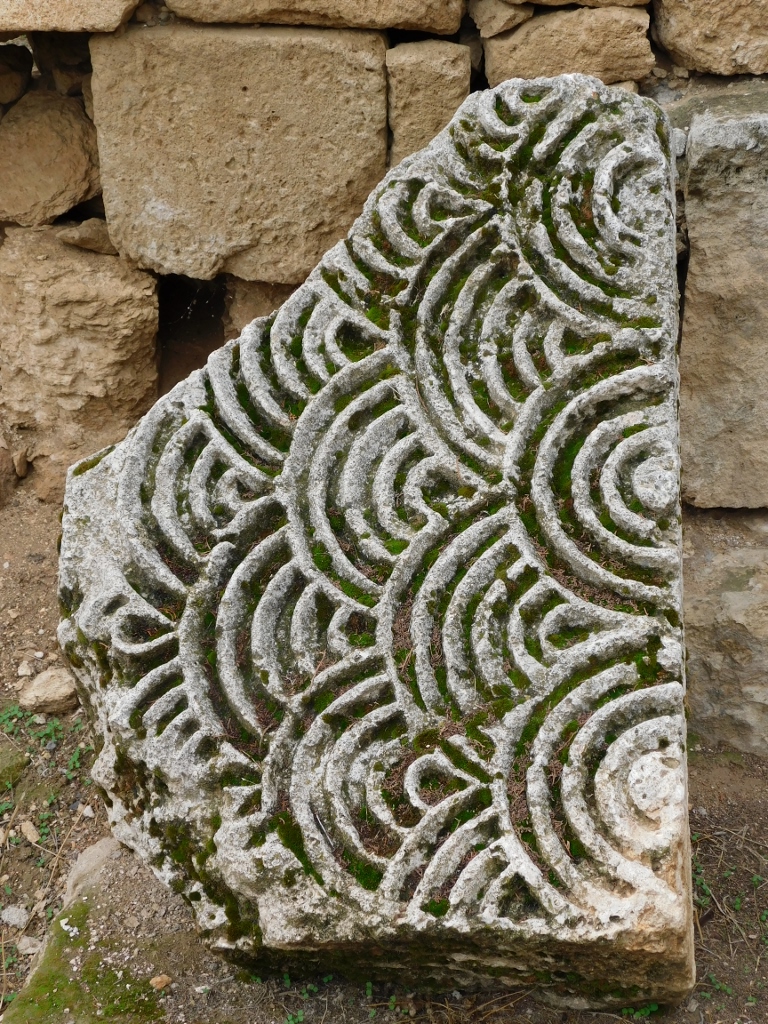 Al Qastal, a detail
Al Qastal, a detail
The next element that caught my attention was the portal.
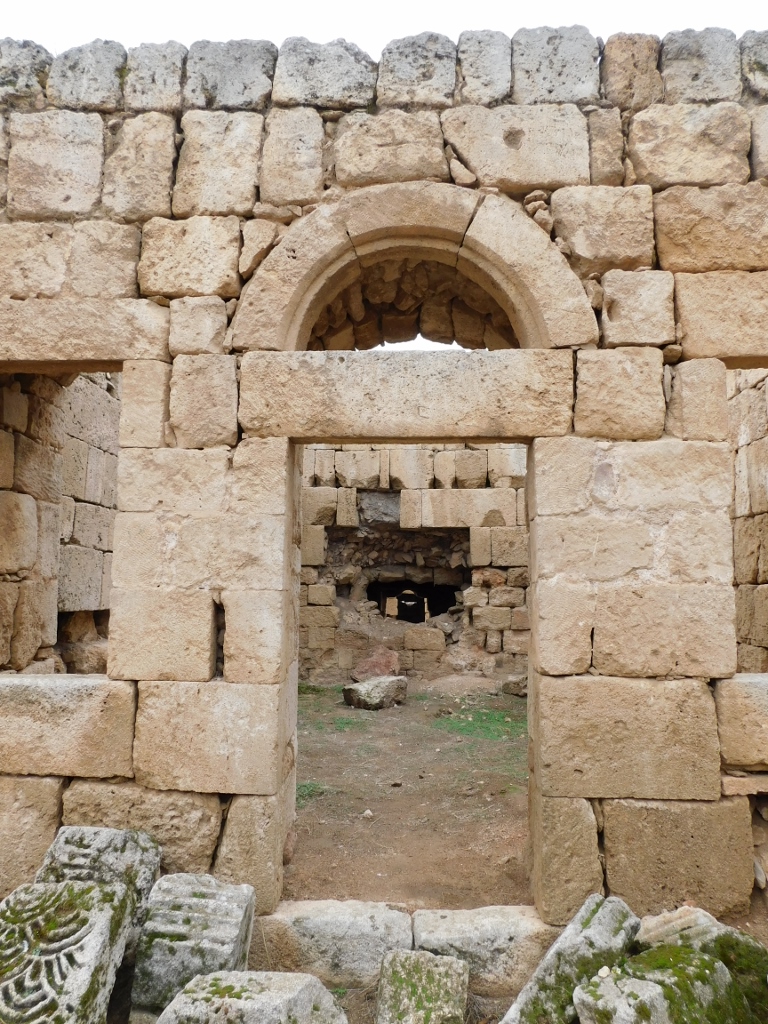 Al Qastal, a detail
Al Qastal, a detail
Then I also went in. I thought, since I was already visiting this house, then I should look at it from all sides. And you could see something interesting everywhere.
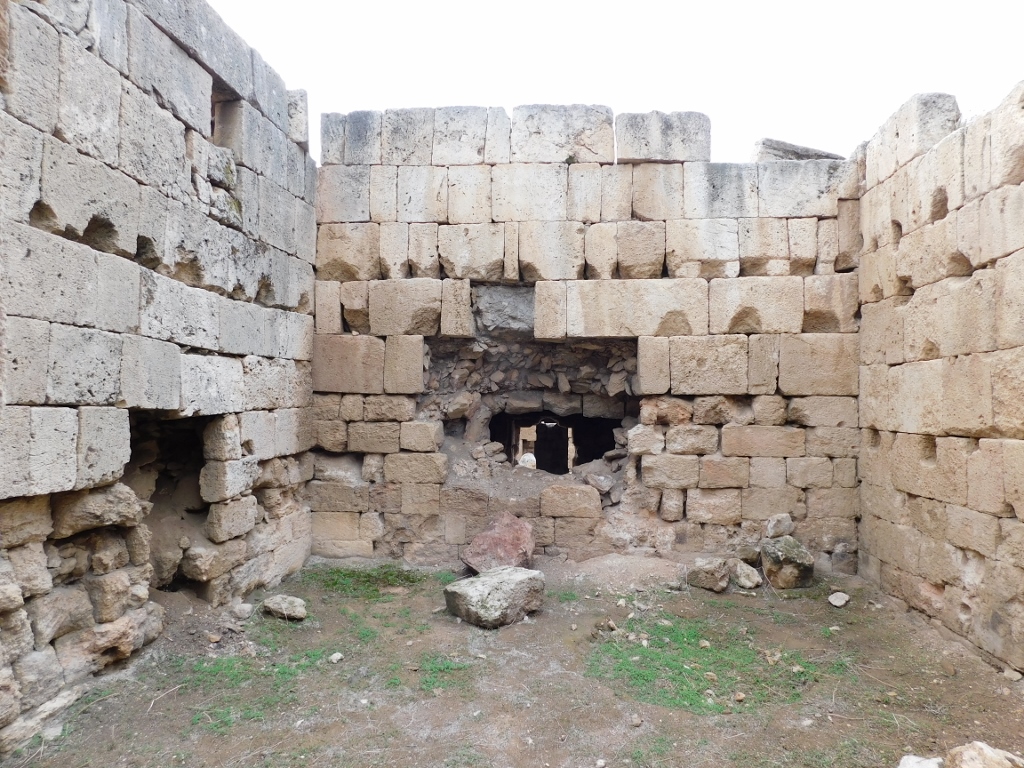 Al Qastal, a detail
Al Qastal, a detail
I was completely in awe of the massive wall in the back where you can see that a part of it had been demolished. When I left this house and continued towards the car, I looked back once again at the house as well as a street of this ancient settlement.
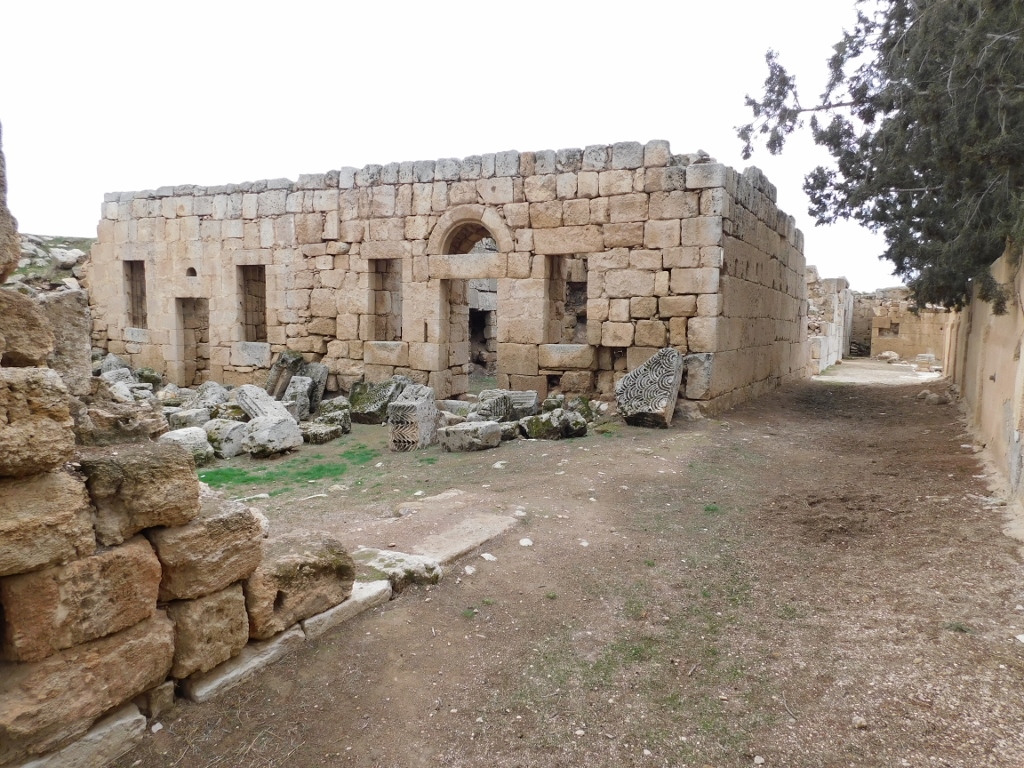 Al Qastal
Al Qastal
Since I’m talking about the construction style, here in several places one can see the impressive way in which the Umayyads built their arches and vaults by arranging, filling up the empty, binding space with earth and pebbles and making a facade, not necessarily in this order.
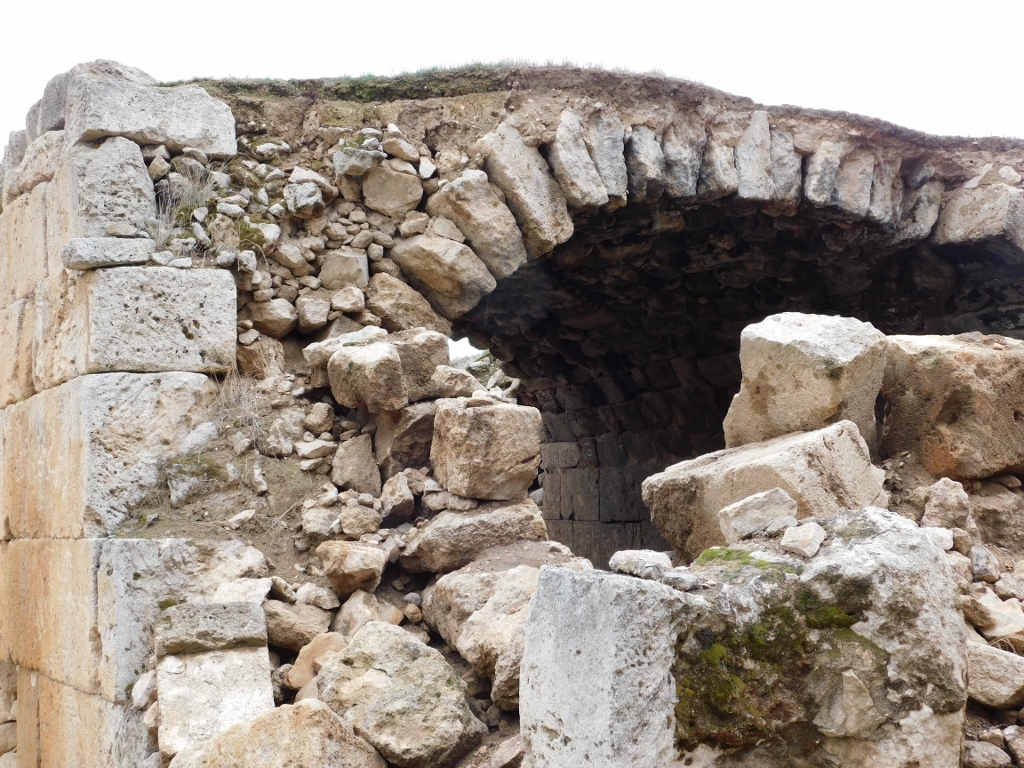 Al Qastal, a detail
Al Qastal, a detail
Just as it was staring to rain a lot I reached the car, settling in it comfortably once again and soon I was back at my hotel in Amman, since the excursion of the day was over. But, since there was still daylight (it was late afternoon), I decided to go and see yet another very interesting monument of culture that is situated in Amman, but some 10 km away from my hotel. This was the Cave of the Seven Sleepers or the Al-Rakim Cave. I asked the receptionist to call an Uber car and to arrange with the driver to take me to the place I wanted to see, but also to wait for me there and bring me back to the hotel. To tell the truth, I would not know how to organise this, which is no wonder since I don’t speak Arabic. Joking aside, I did not know what the situation with taxis around this monument of culture would be, since the place is rather tucked away and I think I was right, for there was almost nobody there and I arrived half an hour before the closing.
The Cave of the Seven Sleepers is a place that is important both for the Islamic and for the Christian traditions, and it is linked to the legend about seven sleepers. The story about the Companions of the Cave is mentioned in the Quran and as for the Christian version of the legend, here it is:
During the persecution of Christianity by Roman Emperor Decius around 250 CE, seven young men were accused of being Christians. They were given some time to recant their faith, but they gave all that they had to the poor, while retreating to a cave to pray where they eventually fell asleep. Since the emperor saw that the young men would not yield, he ordered the entrance into the cave to be walled up. Around the middle of the 5th century, when the Christianity was already the official state religion, the owner of the land where the cave was ordered the cave to be opened since he needed a pen for his livestock. However, he found the seven sleepers inside who then woke up thinking that they had slept for a day. One of them went to the nearby village to buy some food and he was shocked to see crosses throughout the village, while the villagers were surprised that he used old coins. The local bishop talked with them and this miraculous story was ascribed to the God. The young men returned to the cave where the God put them to sleep for ever and ever.
Still, it needs to be said that there are a couple of other places (in Turkey, primarily in Ephesus) that claim that their respective cave is the true spot where the seven young men fell asleep. Be as it may, I was not in Turkey on this occasion, but in Jordan, so I came to see the Cave of the Seven Sleepers in Amman.
The cave here is a part of a complex that includes a mosque of the same name and this is the first structure that you see once you walk through the gate.
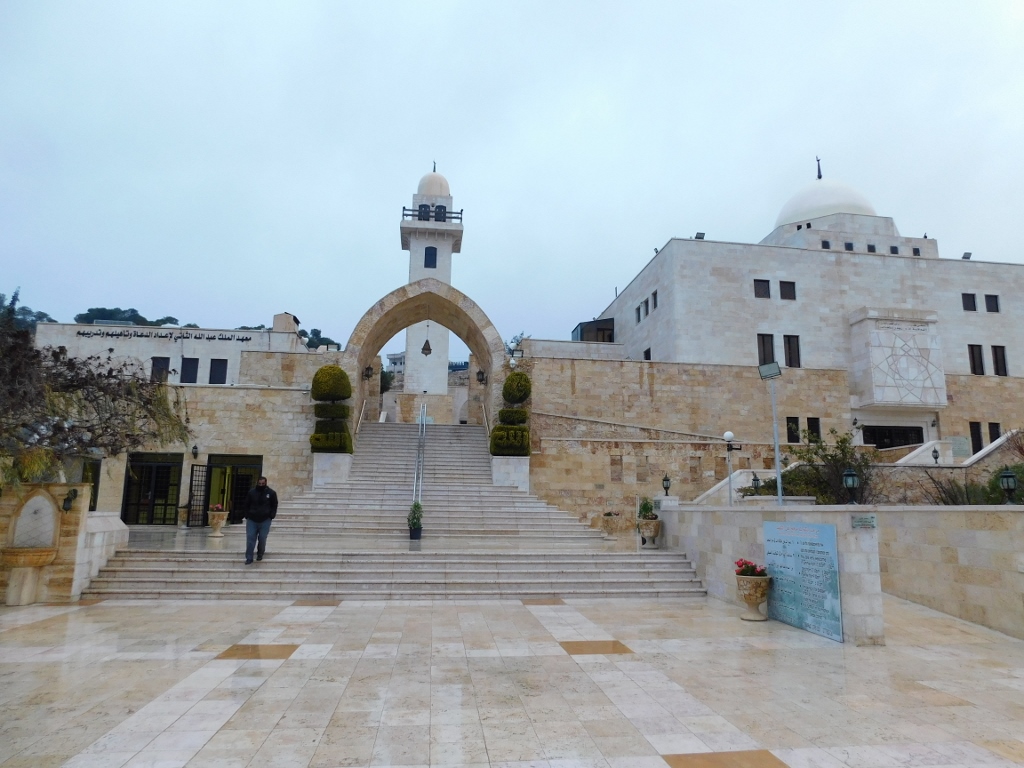 Cave of the Seven Sleepers Mosque
Cave of the Seven Sleepers Mosque
From this plateau one needs to turn right and there is a visible archaeological site there, including pointers showing which way leads to the cave.
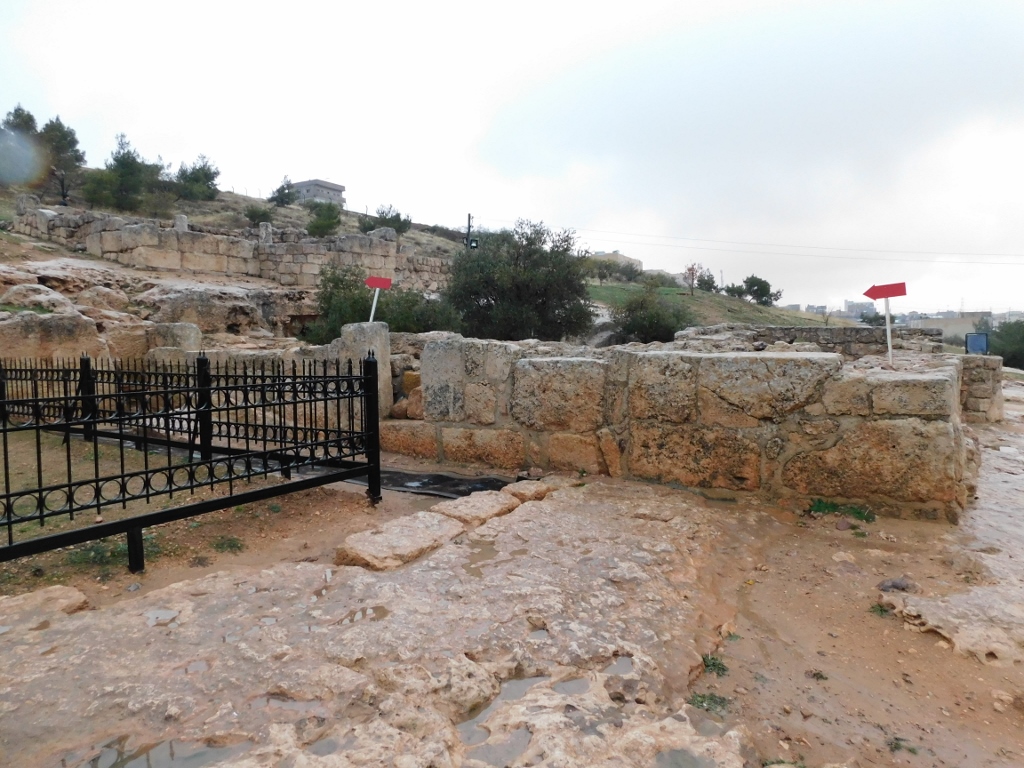 Cave of the Seven Sleepers
Cave of the Seven Sleepers
You go a little between the remains of the walls and little bit over them. In any case, when the visitor gets closer to the entrance, there are some plastic-rubbery long mats to make sure that no mud is transferred into the cave.
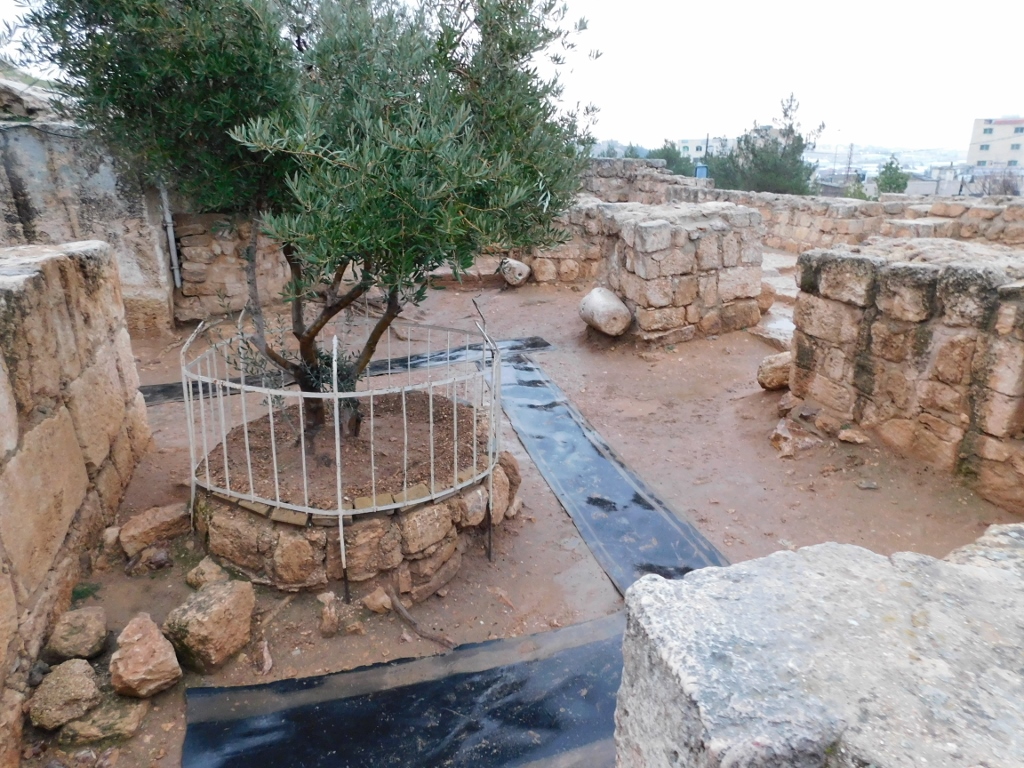 Cave of the Seven Sleepers
Cave of the Seven Sleepers
But, when I got to the cave, the entrance door was clearly shut. I was confused. I did not see anyone here, so I did not know what to do. Then I started to get to terms that they had probably already locked up the cave, being the end of the working hours, it rained and there was nobody around...
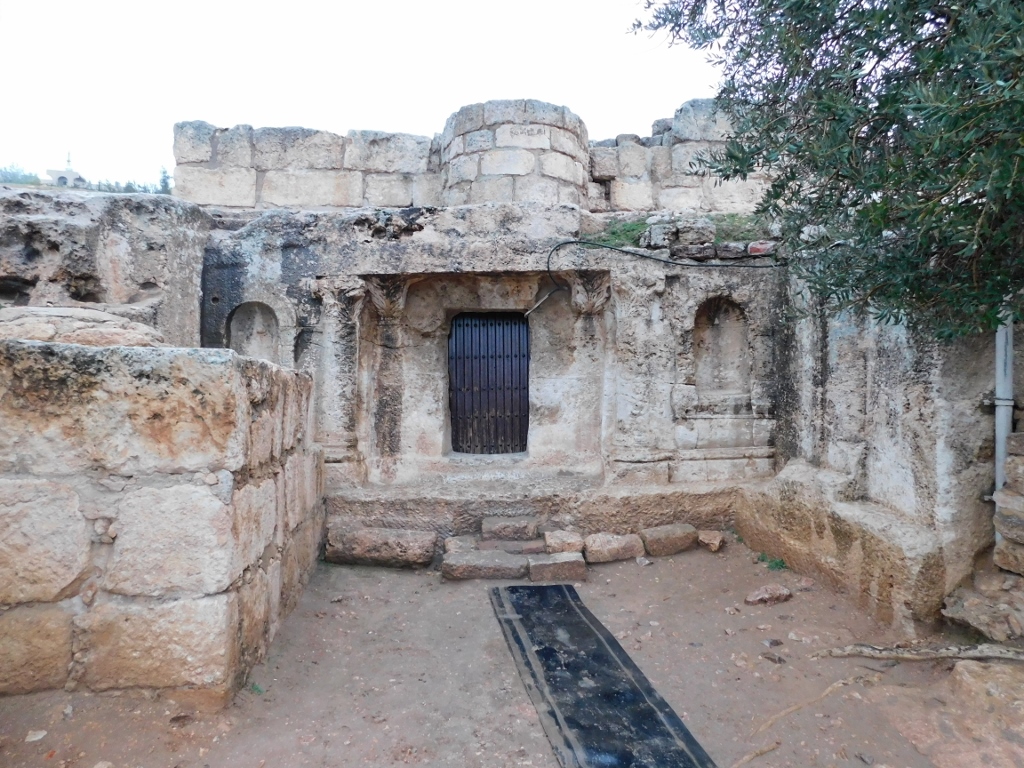 Cave of the Seven Sleepers
Cave of the Seven Sleepers
While I was standing here, taking photos, I noticed a young man coming down the mild slope to the right where there were also parts of the archaeological site. I waited for him to get closer and then I asked him if he knew how I could get into the cave. He then pointed at a man who was actually just coming towards me from the plateau in front of the mosque saying that this was the guard who was going to open the cave for us. Wonderful!!!
It turned out that this man was also a kind of a guide who shared some details with me. To start with, this is clearly not a natural cave, but a Byzantine rock-cut tomb made in the rocky slope of the hill. During the Antiquity, there was a small church built just above the cave and in time it was turned into a mosque. Remains of that mosque’s mihrab may be seen in the previous photo, right above the entrance into the cave.
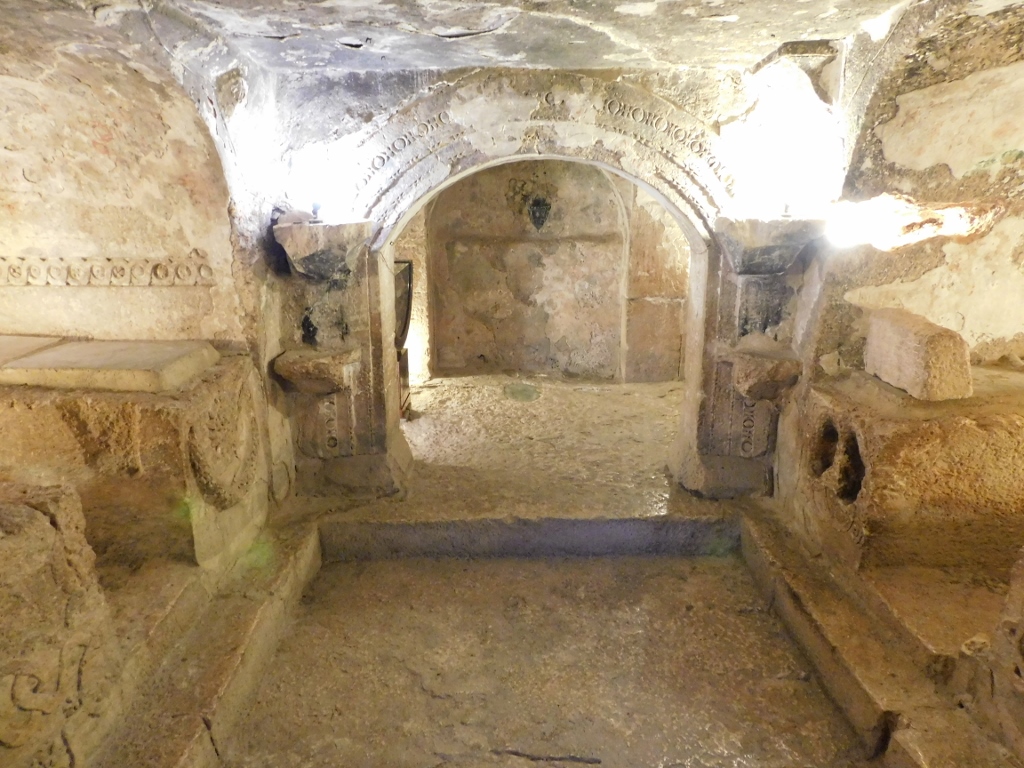 Cave of the Seven Sleepers
Cave of the Seven Sleepers
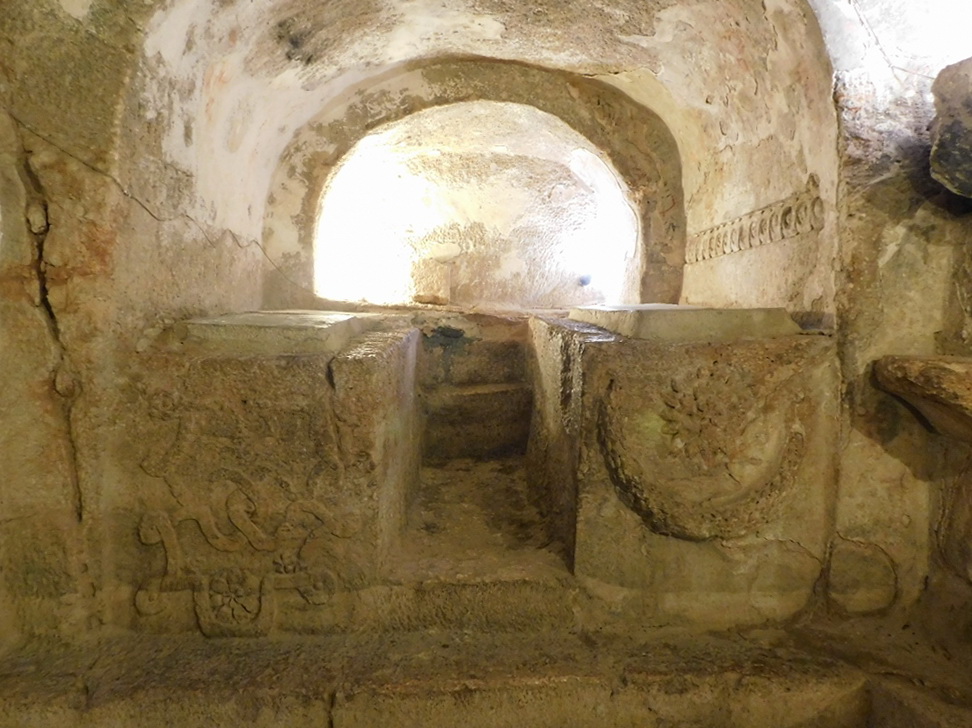 Cave of the Seven Sleepers
Cave of the Seven Sleepers
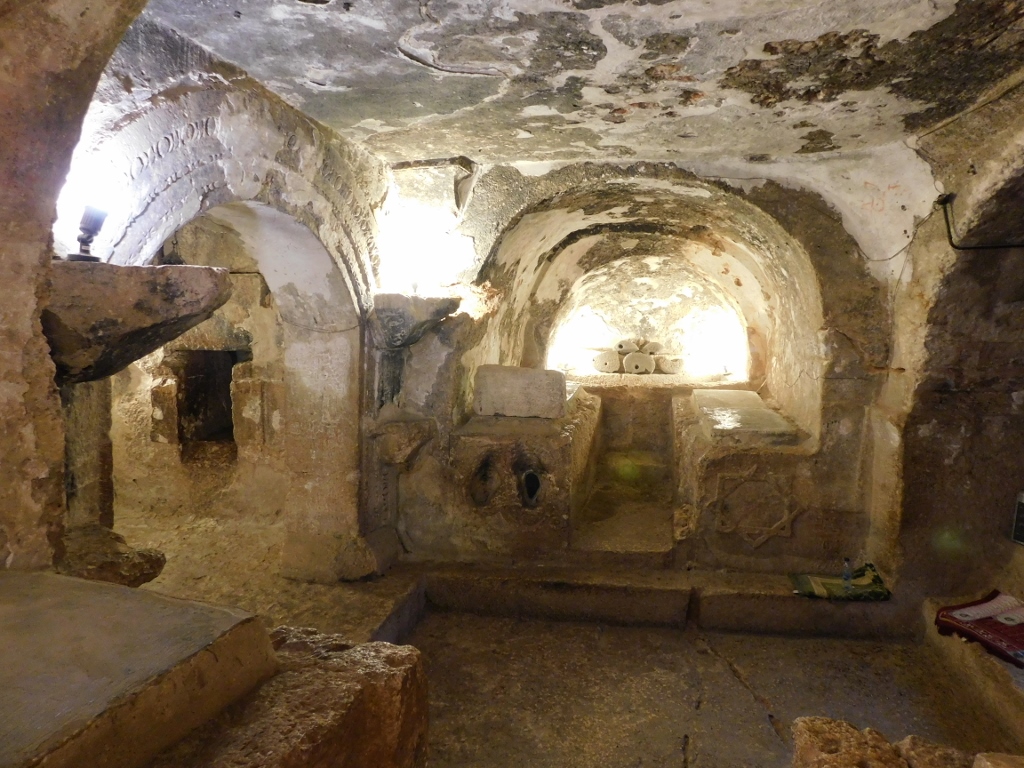 Cave of the Seven Sleepers
Cave of the Seven Sleepers
The next photo just shows a more up-close part of the photo above, since one should note an eight-pointed star on the right-hand tomb – this is a Byzantine Christian symbol.
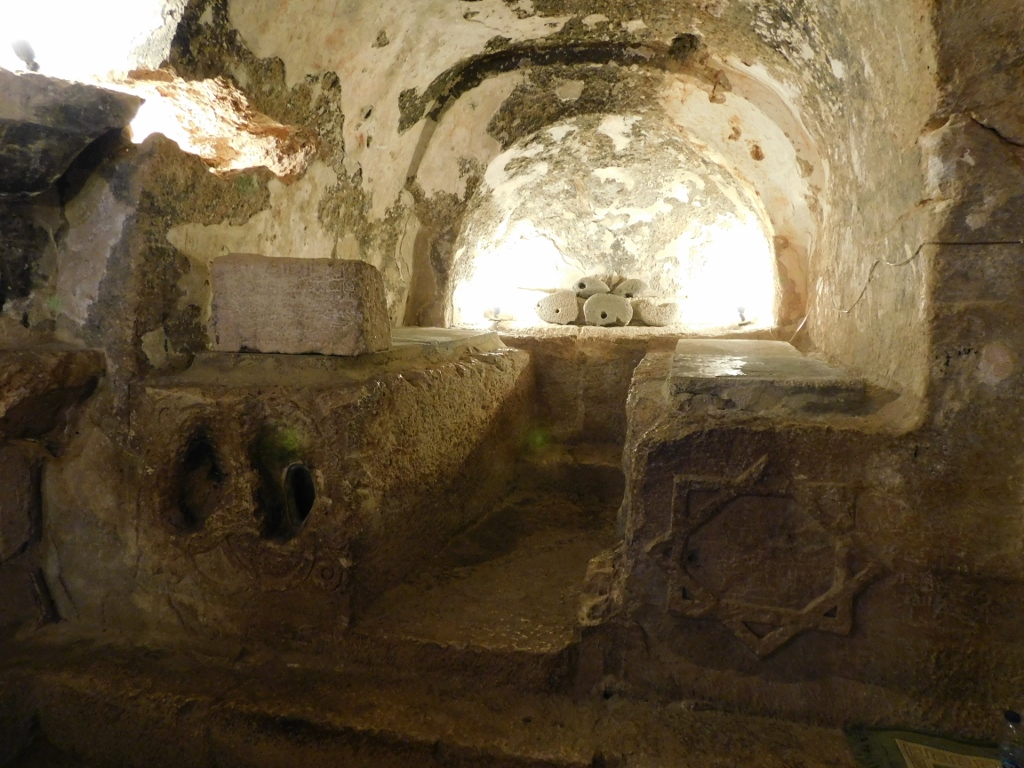 Cave of the Seven Sleepers
Cave of the Seven Sleepers
And now, all of this once again, but in the shape of a video clip, which is particularly interesting in order to hear the acoustics in the cave.
Having finished with this, I was tranquil and very content, so I left the cave and headed back to the taxi waiting for me.
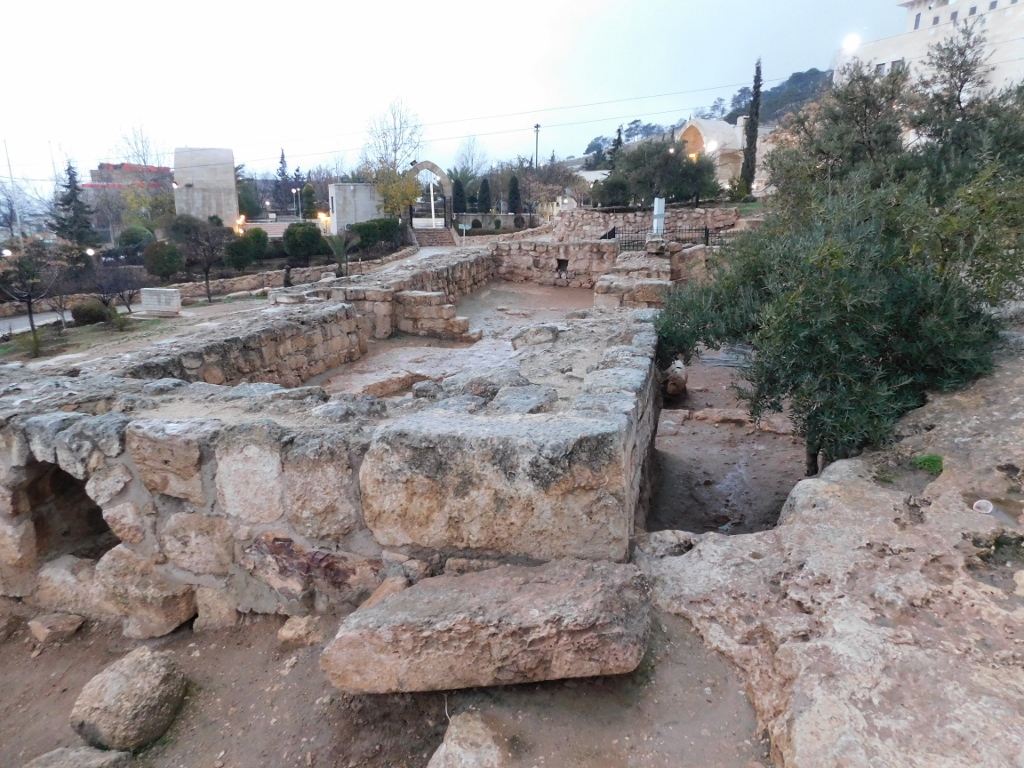 Archaeological site in front of the Cave of the Seven Sleepers
Archaeological site in front of the Cave of the Seven Sleepers
Still, before actually getting into the taxi, the driver kindly offered to take a couple of photos of me here. What a great guy!
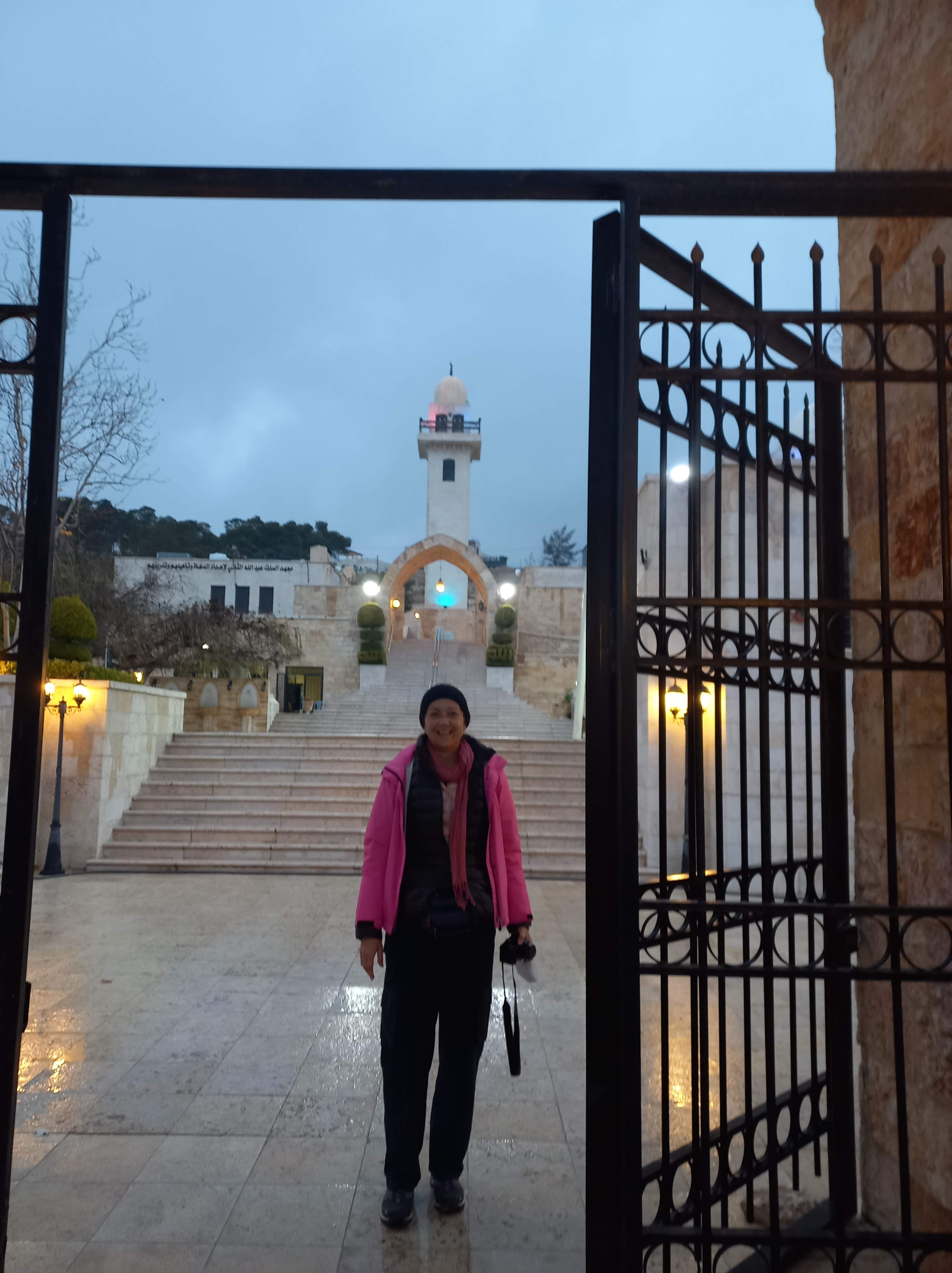 In front of the Cave of the Seven Sleepers Mosque
In front of the Cave of the Seven Sleepers Mosque
Having returned to Amman, I went again to treat myself to a portion of kunafa or knafeh, the sweet I wrote about in part 5 of my travel stories about Jordan. As I said then, there is ALWAYS line in front of the sweet shop. And there is a very good reason for that.
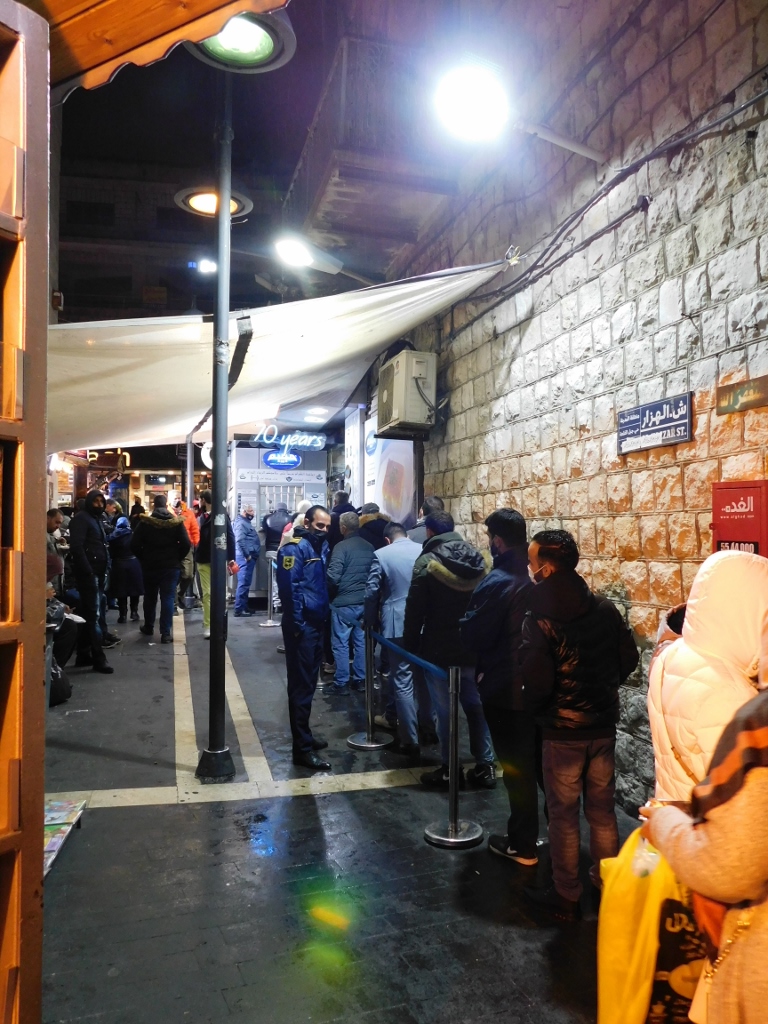 Line in front of the shop selling knafeh
Line in front of the shop selling knafeh
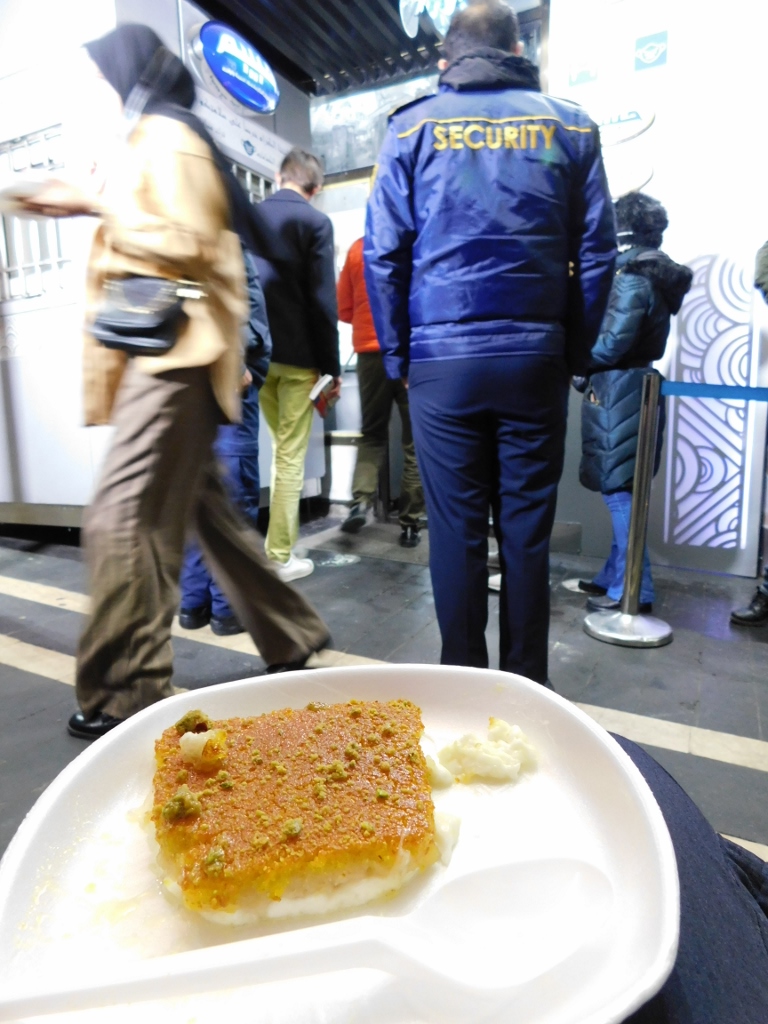 Now I’m sitting on a chair in front of the shop, so I can start eating
Now I’m sitting on a chair in front of the shop, so I can start eating
By the way, when I returned home I still did not even dream of trying to make knafeh, but I did make another exceptional Levantine sweet that I ate in Jordan. This is the barazek cookie. Here is the recipe:
BARAZEK
- 500 g flour
- 250 g butter
- 200 g sugar
- 1/2 cup water
- 1/4 cup sugar syrup
- 200-300 g pistachios or chopped different nuts
- 200 g roasted sesame seeds
- 1 tbs sugar
- 3 tbs sugar syrup
Butter should be soft (room temperature). Mix well the butter and the flour, until you get fine crumbs.
In a separate bowl combine sugar, syrup and water and stir until the sugar has dissolved a little. Then add it to the dry ingredients and mix until you get smooth dough that is relatively soft. You can put it in the fridge for 15 minutes, but this is not mandatory.
Put the sesame seeds into a shallow dish and combine with sugar and sugar syrup, and mix well with hands so that it is all well combined and the sesame seeds are well covered by the syrup. The pistachios or the nuts should be put into a different dish.
Take a small piece of dough and make a ball of approximately 2 cm between your palms. Put the dough ball into the pistachios so that 3-4 pieces stick to the dough and then on the work surface flatten the dough a little so that the pistachios are down. Then put the clean side of the dough into the sesame mixture so that the sesame sticks to the dough. Carefully take the dough disk out and put it onto a lined baking tray so that the pistachios are down and the sesame seeds are up.
Bake at 180 degrees C for 10-15 minutes.
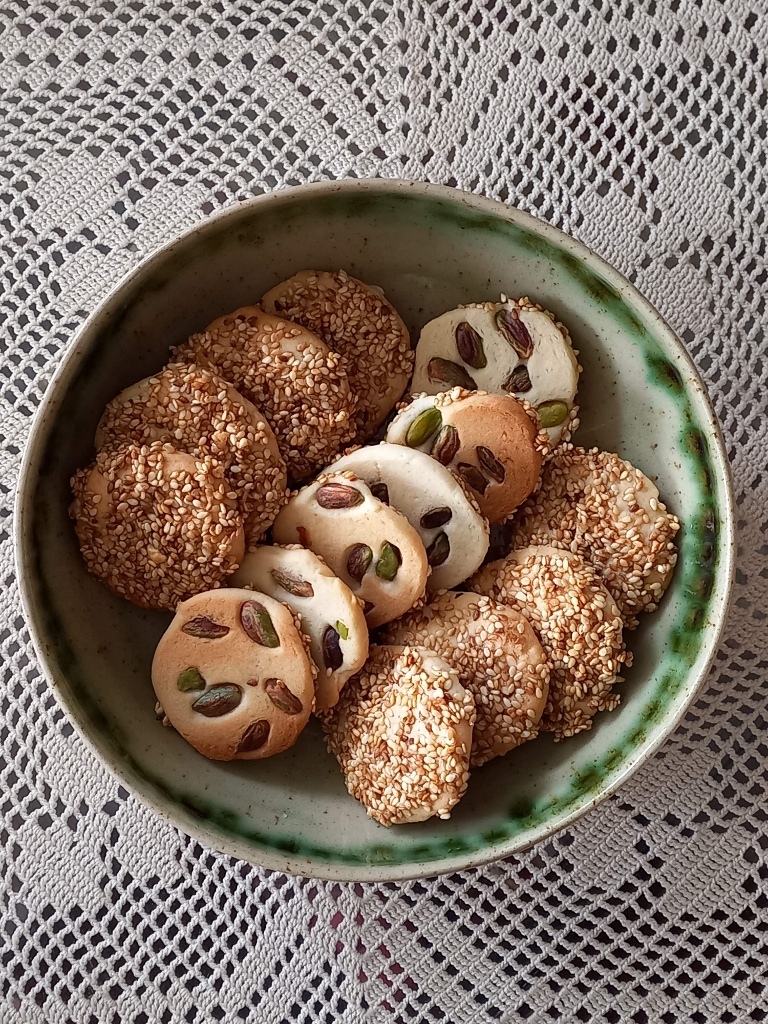 Home-made Barazek cookies served in a bowl I made myself during pottery classes
Home-made Barazek cookies served in a bowl I made myself during pottery classes
With my stomach nicely full after the knafeh, I started going towards the hotel, but this time walking through the Gold souk that is located in the downtown area of Amman. There is a lot of gold here; a lot!
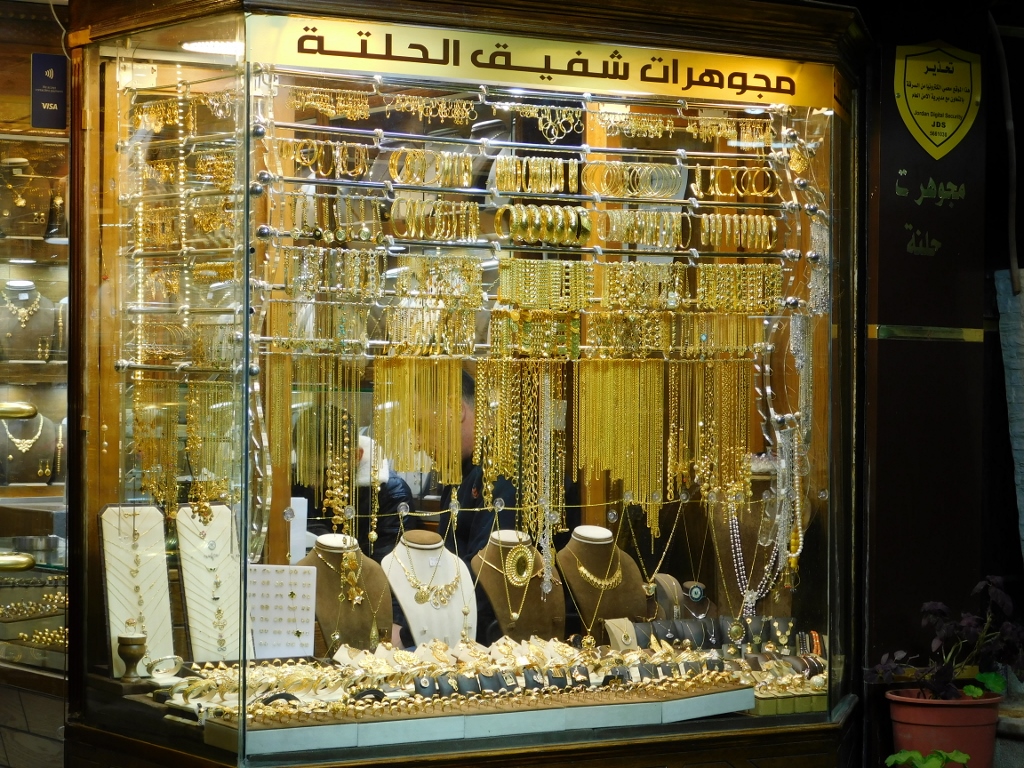 Gold souk, a detail
Gold souk, a detail
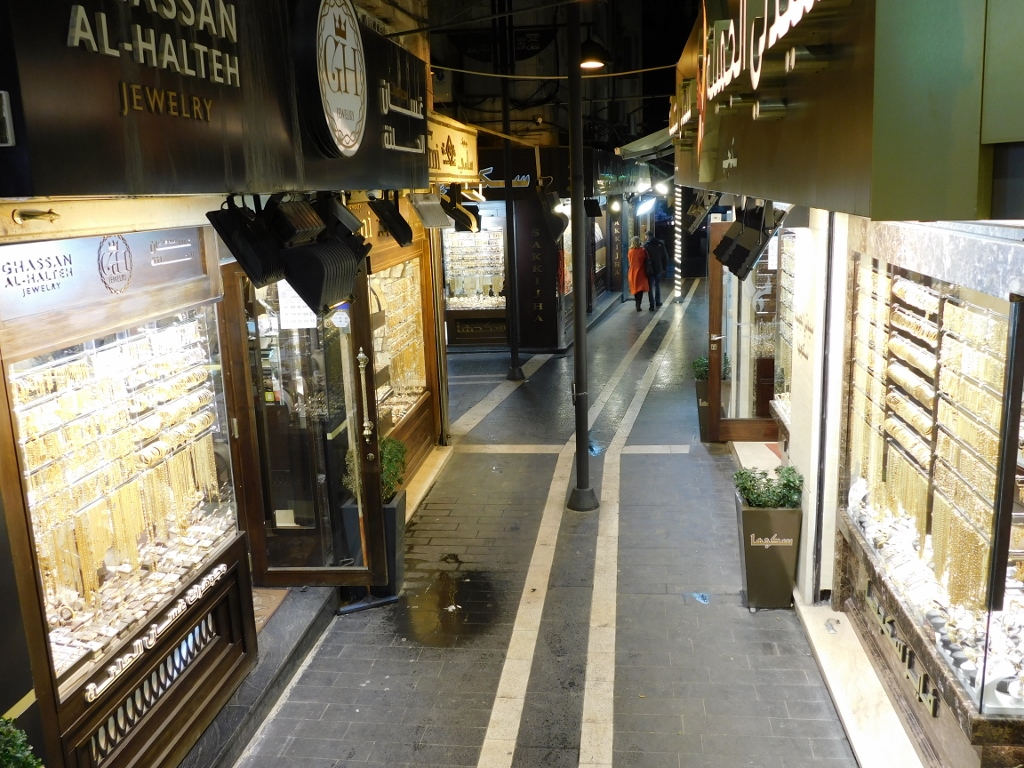 Gold souk, a detail
Gold souk, a detail
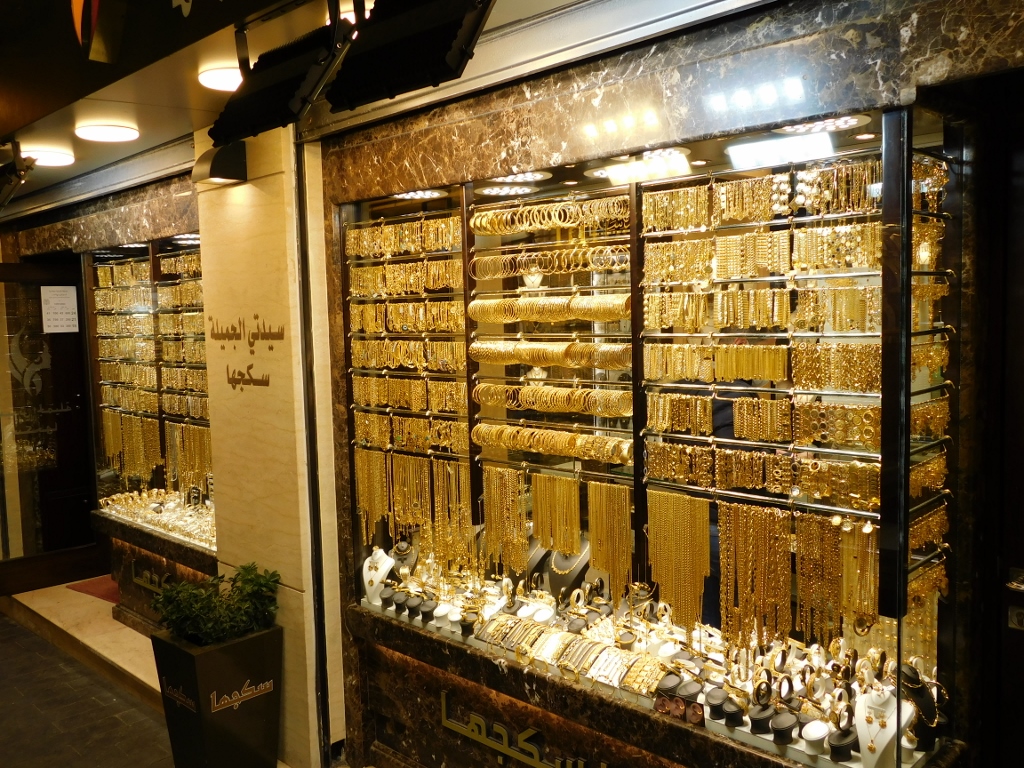 Gold souk, a detail
Gold souk, a detail
The next morning I was greeted by rain that bucketed down. So much so that it leaked in a couple of spots in the breakfast room. As a result, I had my breakfast quickly, while the driver and the car were already waiting for me when I got my things from the room.
The situation with the weather was not any better along the motorway. Admittedly, the forecast said that it would not rain in Umm Qais where I was going, but along the way it poured.
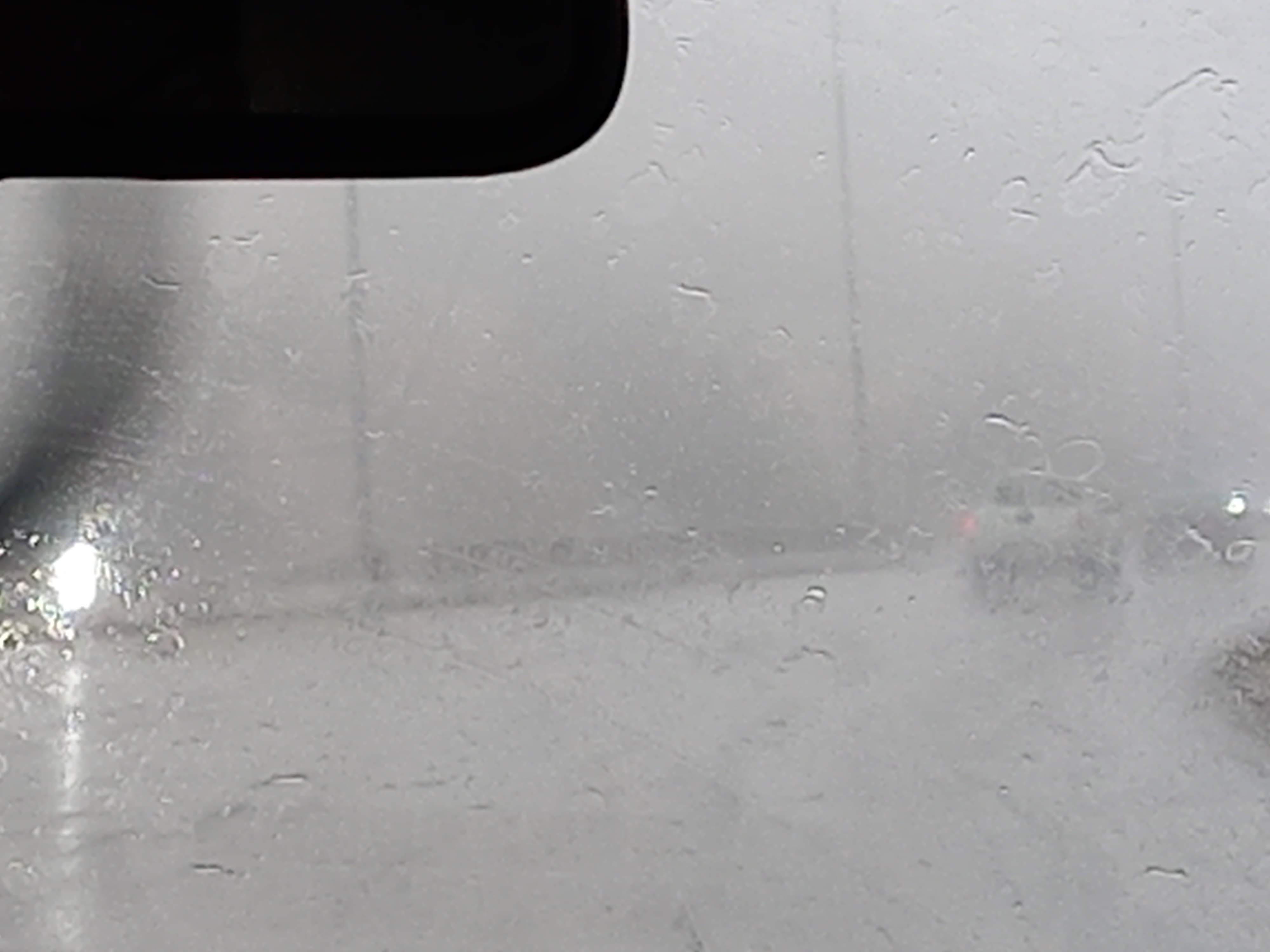 Motorway north of Amman at some point in January
Motorway north of Amman at some point in January
But, I did not allow such a trifle to distract me, so I proposed to the driver (this was again a new person for me, not one of those from the previous days) that we made a stop somewhere and buy Turkish coffee to go. The man kindly agreed. Let me mention it again, the Jordanians make Turkish coffee in such a way that they add cardamom to it, so the final beverage has a very interesting aroma.
The road took us beside Irbid, the second largest city in Jordan. Originally I thought I would come here and stay for a couple of days in order to be able to visit monuments of culture in the north of the country that are plentiful, but eventually I decided to carry out all of my sightseeing tours from Amman. Both of these options have their advantages and disadvantages, but in this was I used the time I had at my disposal more efficiently.
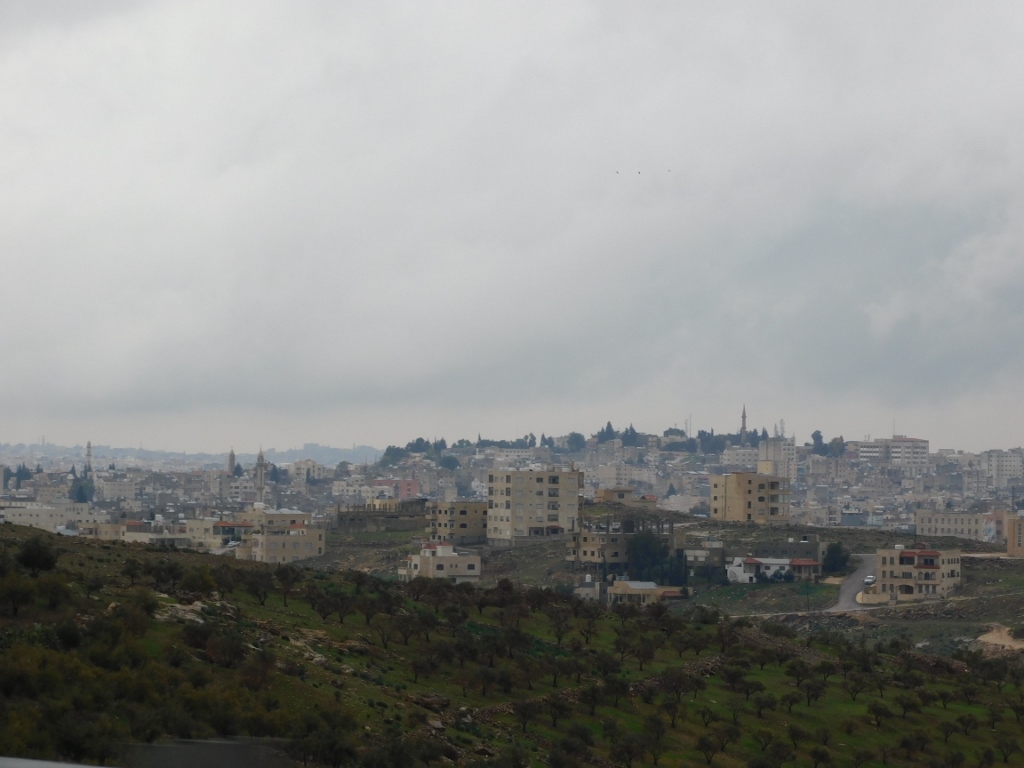 View at Irbid from the motorway
View at Irbid from the motorway
Then we headed towards the very northwest tip of Jordan. As it may be seen in the photo below, the hills and the valleys are quite green and along the way I saw numerous olive groves. As the driver told me, the olives are mostly grown in the areas around Irbid, Jerash and Aljoun.
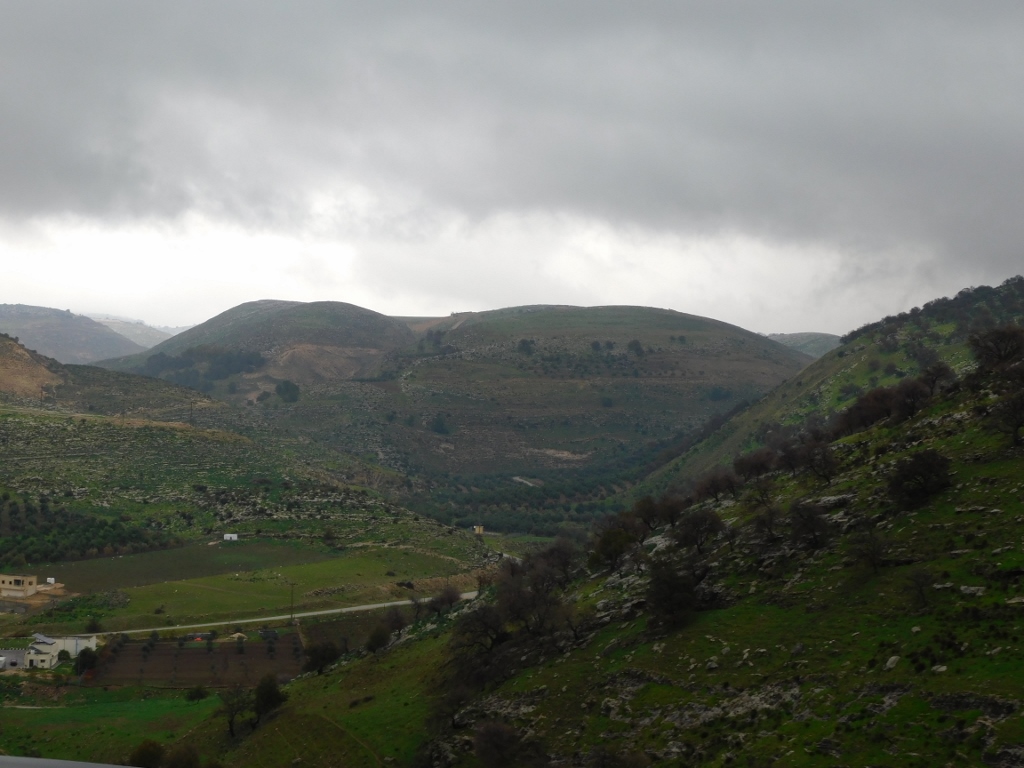 Northwest Jordan
Northwest Jordan
When I say that the driver “told” me, it means that he said what he had to say in his mobile phone and then, using an app, the phone translated that into English which I could hear, since the app also included a human voice. Therefore, this kind gentleman and I could communicate quite well and we agreed different things in this way.
As I’ve said, the forecast for Umm Qais said it would be cloudy, but with no rain. It was not wrong, it had already stopped raining.
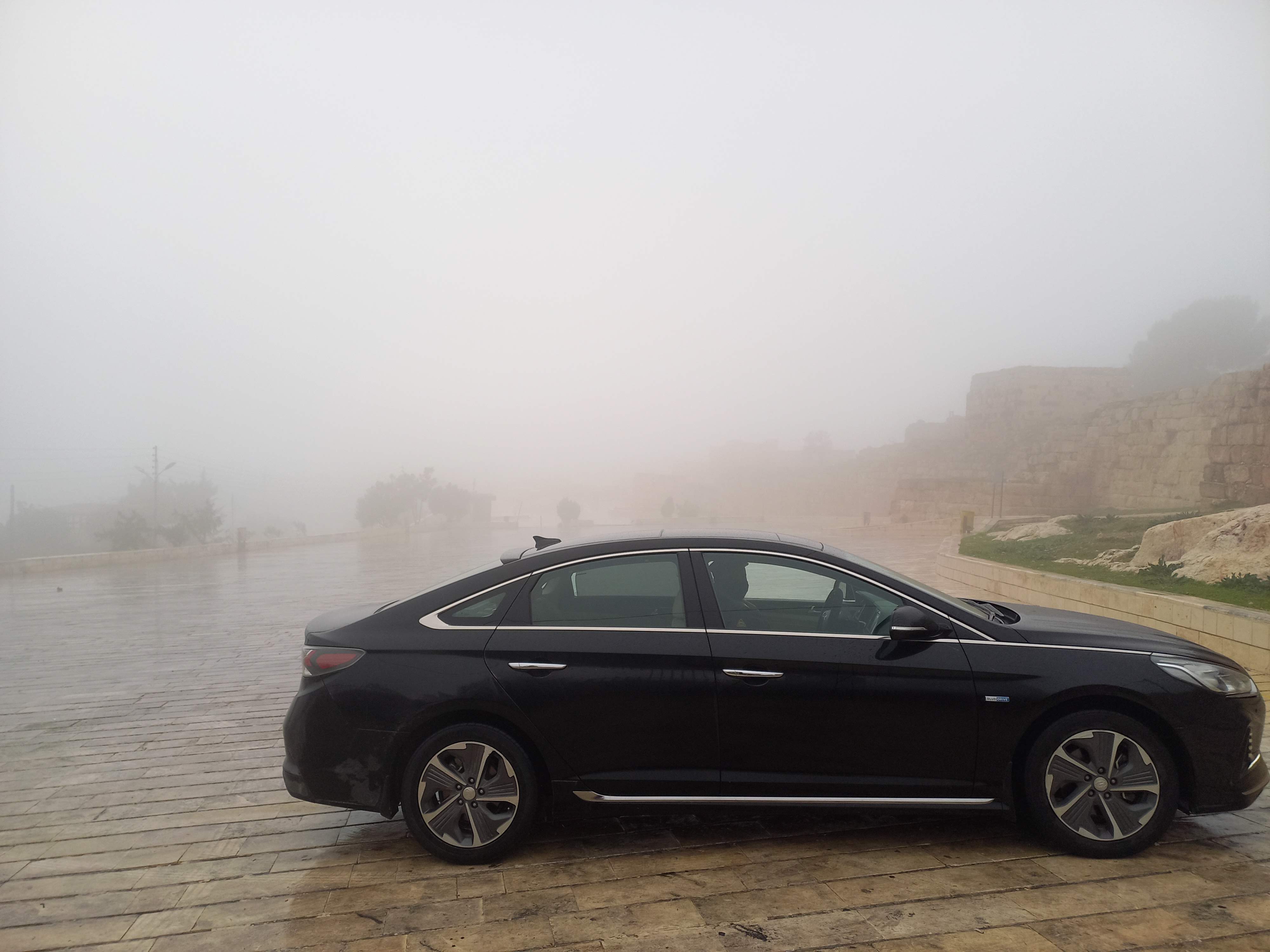 I have arrived in Umm Qais
I have arrived in Umm Qais